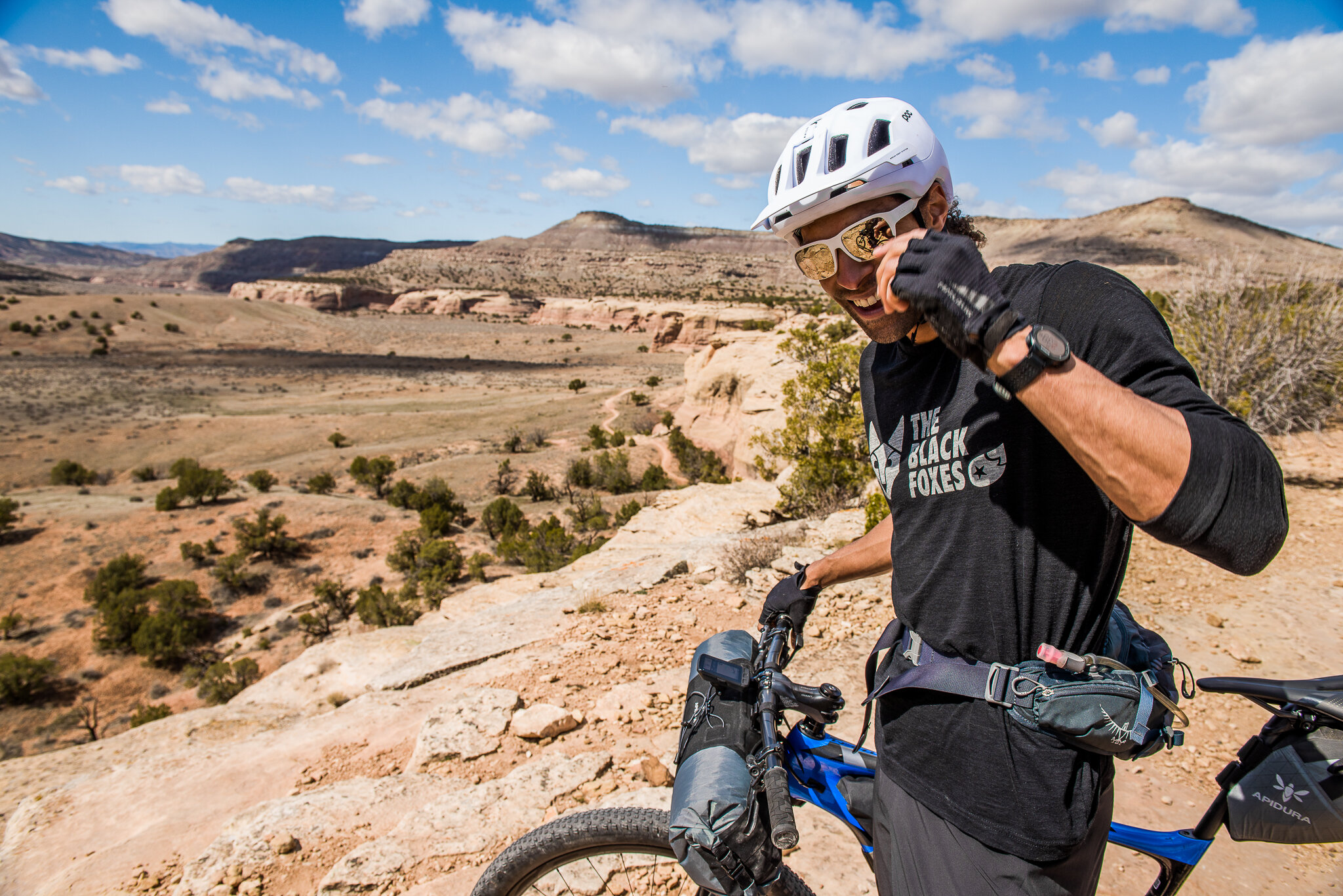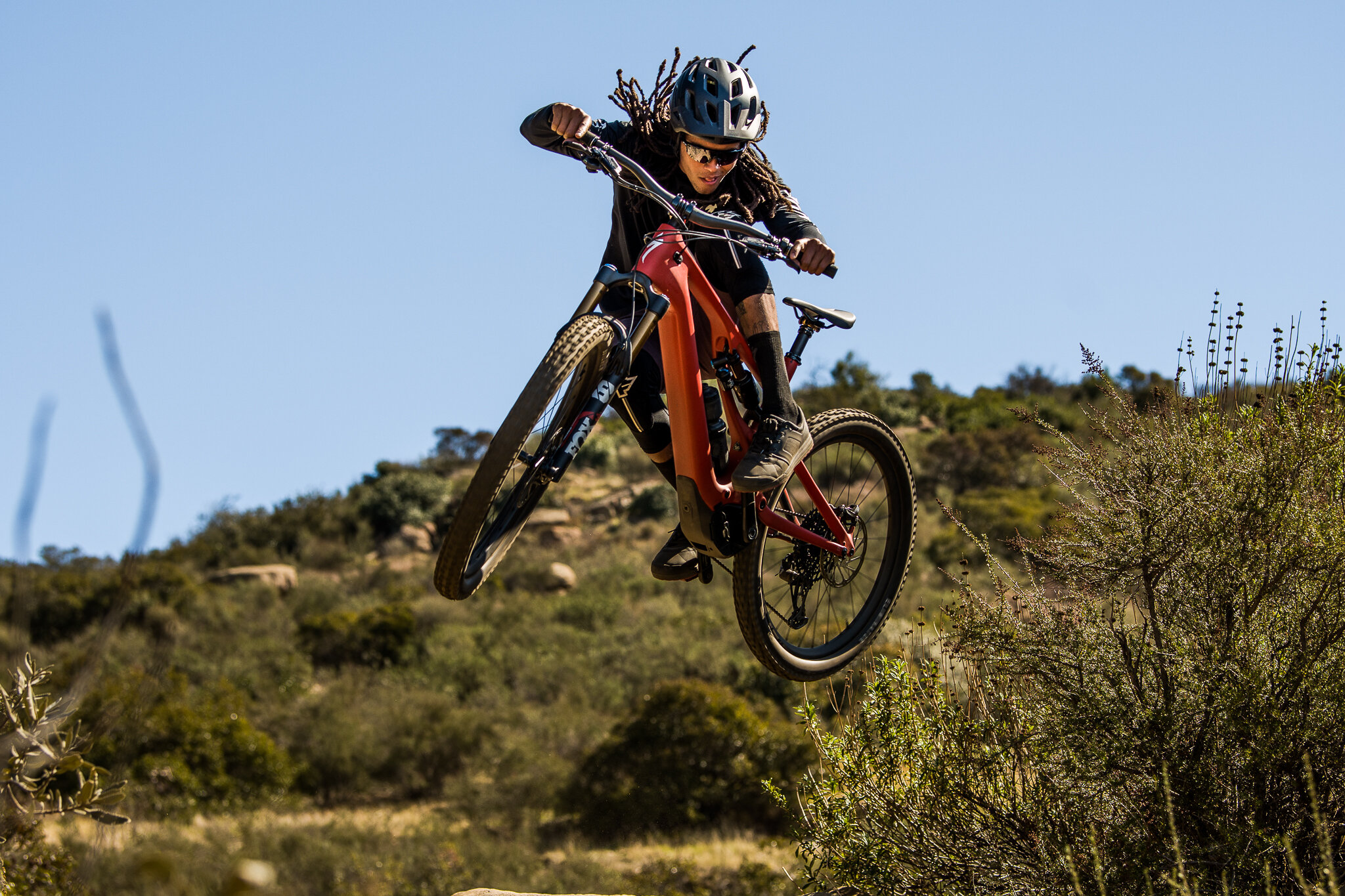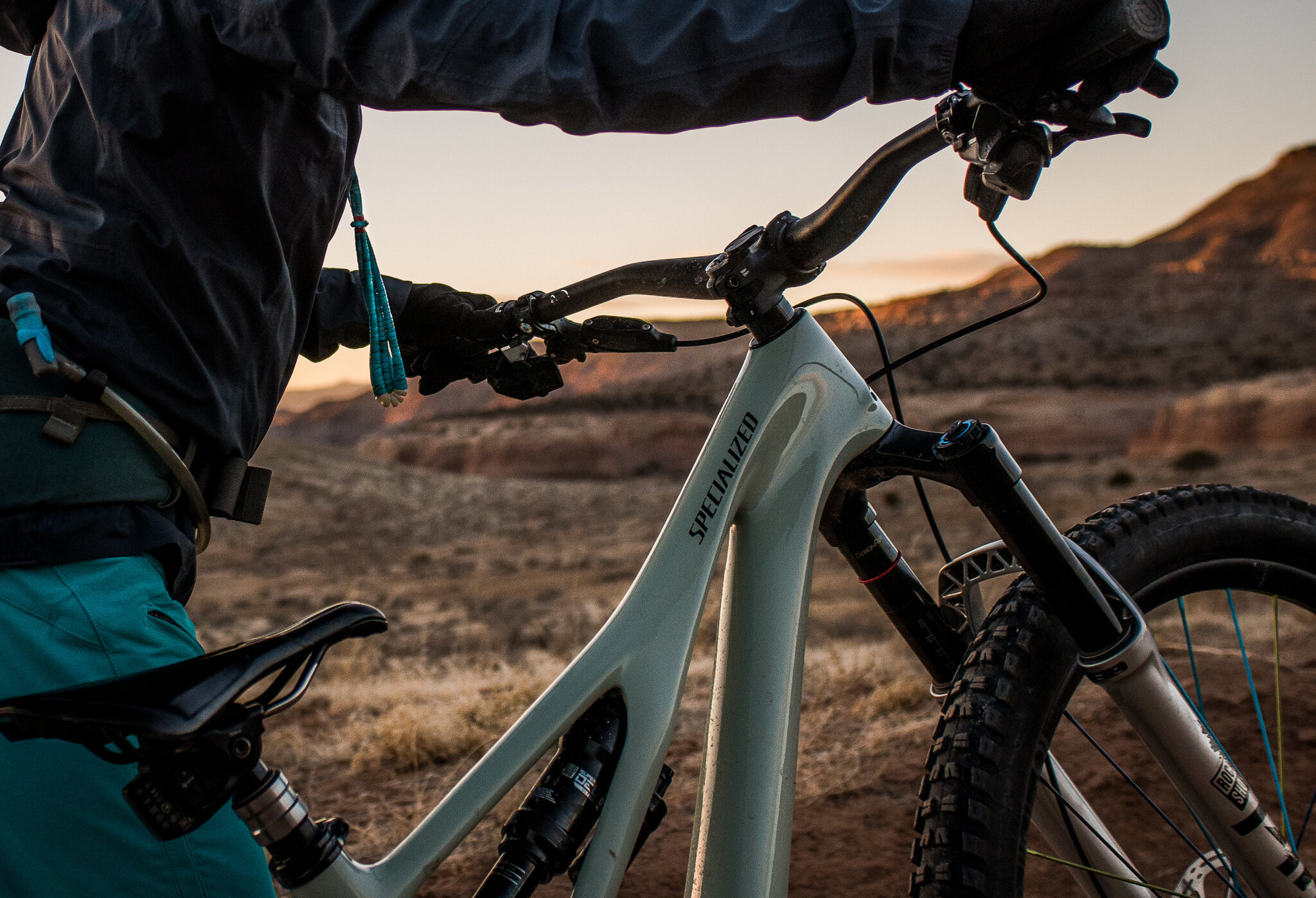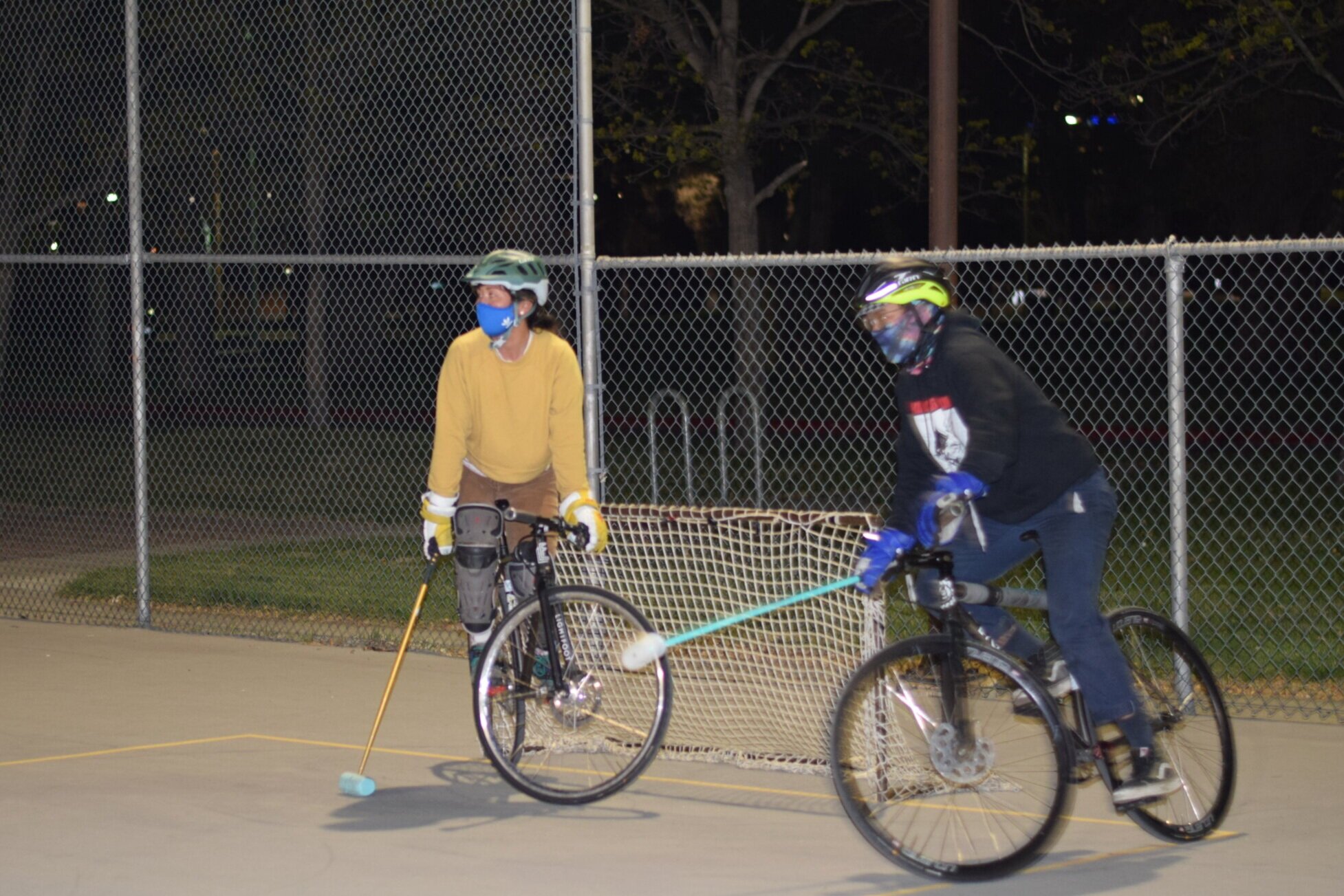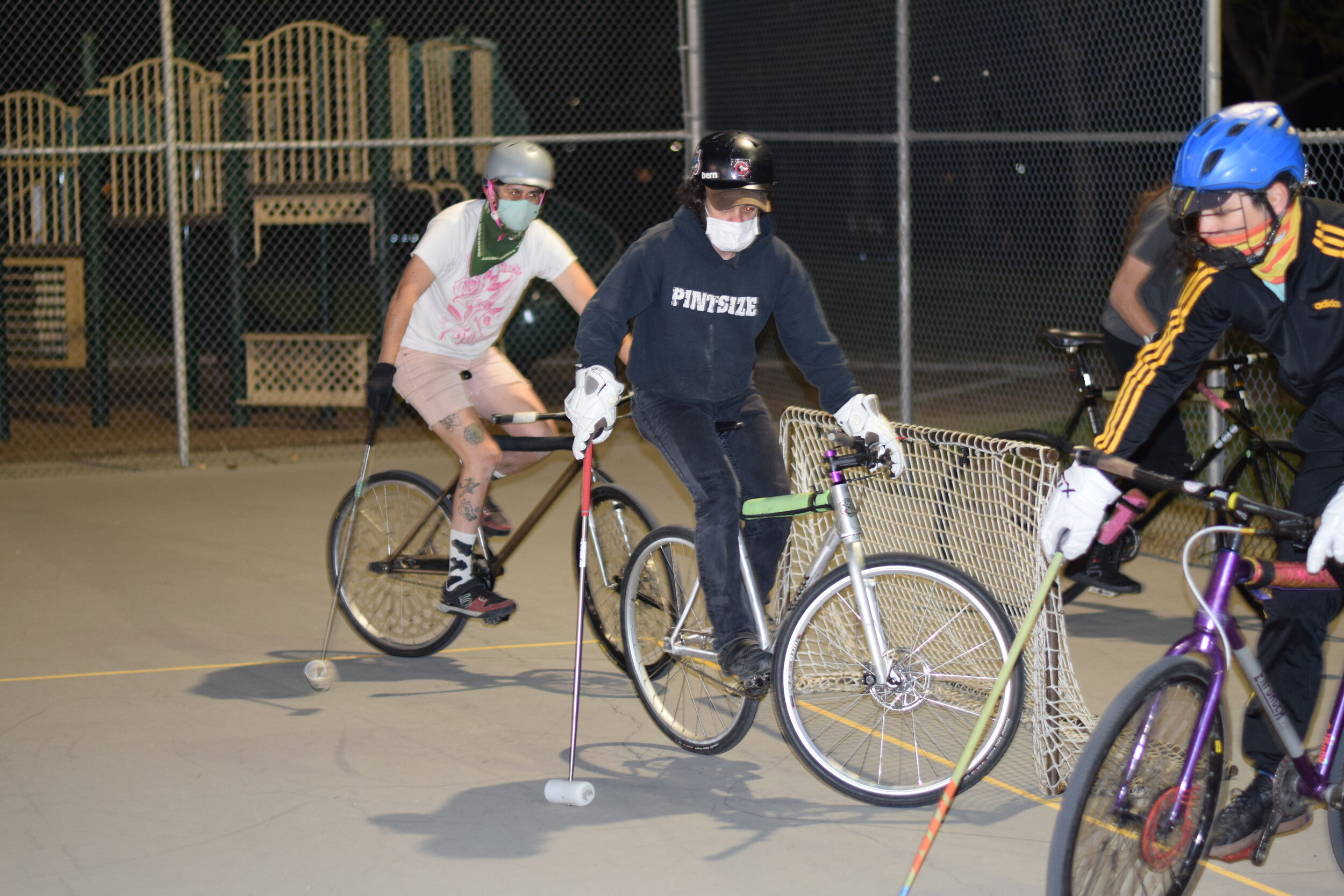
BIKE UTAH NEWS
Welcome Ashley Carlson, Youth Program Manager
Bike Utah’s BEST team is growing and changing, and we are so excited to welcome our newest Youth Program Manager, Ashley Carlson!
Ashley is originally from Nebraska and excited to explore all the bike adventures that Utah has to offer. She is passionate about teaching others to ride and fix their own bikes, “I think it is so empowering to learn new skills, especially intimidating ones like these. I get especially excited about teaching women and girls mechanical skills, and supporting them in their learning.”
Ashley most recently worked as the program manager at the Bike Union in Nebraska, where she managed both a bike shop and coffee shop that trained underserved youth to gain skills as both bike mechanics and baristas. She prioritizes inclusion in her work, noting that, “I hope to make cycling more accessible to everyone by equipping people with the skills to ride safely and by being part of fostering an inclusive and open cycling community.” As Bike Utah’s Youth Program Manager, Ashley will work collaboratively with and oversee the success of the Youth Program team to implement all aspects of the Youth BEST Program across the state, helping to shape the future of cyclists in Utah.
When it comes to riding her own bike, Ashley loves all types of terrain, but gravel is her favorite. Her biggest bike adventure was taking her mountain bike to solo ride around the trails in Bentonville, Arkansas, and she hopes to bikepack the Kokopelli Trail while here in Utah.
Please join us in welcoming Ashley to Bike Utah!
Rules of the Trail
It’s summer in Utah and we love seeing so many cyclists out on the trails! In 1988 IMBA launched its Rules of the Trail to educate mountain bikers and serve as a pro-bike advocacy tool. These guidelines for responsible riding have been adopted by land-management agencies nationwide. The way we ride today shapes mountain bike trail access tomorrow. Pledge to ride friendly; ride prepared; ride responsibly; ride lightly.
Ride In Control: Speed, inattentiveness, and rudeness are the primary sources of trail conflict among user groups. If you need to pass, slow down, ring a bell or verbally announce yourself, and wait until the other trail user is out of the path. Use extra caution around horses, which are unpredictable. Be extra aware when riding trails with poor sight lines and blind corners, and make sure you can hear what's going on around you.
Ride Open Trails: Poaching trails, building illegal singletrack, or adding unauthorized trail features are detrimental to our access. Poorly-built features could also seriously injure other trail users. If you believe there aren’t enough trails or variety near you, it's time to get involved. Your engagement will be welcomed because it takes a village to create, enhance, and protect great places to ride.
Leave No Trace: Be sensitive to the dirt beneath you. Wet and muddy trails are more vulnerable to damage than dry ones. When the trail is soft, consider other riding options. This also means staying on existing trails and not creating new ones. Don’t cut switchbacks. Be sure to pack out at least as much as you pack in.
Yield Appropriately: Most of the trails we ride are multi-use. Mountain bikers yield to horses and foot traffic, and descending riders yield to climbing riders. This yield triangle has been formally adopted by land managers since the late 1970s and is a significant reason why we have the access we do. There are some regional differences and unique rules on single-use, directional mountain bike trails—know the code where you ride. Be nice. Say hi!
Mind The Animals: When it comes to wildlife, live and let live. In some places, running cattle and disturbing wildlife are serious offenses. If you want to ride with your dog, first find out whether or not it's allowed by looking up the leash laws and trail restrictions. Be prepared to take care of your dog. Ensure your companion is obedient enough to not cause problems for you, other trail users, or wild animals.
Plan Ahead: Know your equipment, your ability and the area in which you are riding and prepare accordingly. Strive to be self-sufficient: keep your equipment in good repair and carry necessary supplies for changes in weather or other conditions. Always wear a helmet and appropriate safety gear.
PC: Dan Ransom from one of the Bike Utah Mid Week Mountain Bike Race Series!
2021 Utah Bike Summit Wrap Up
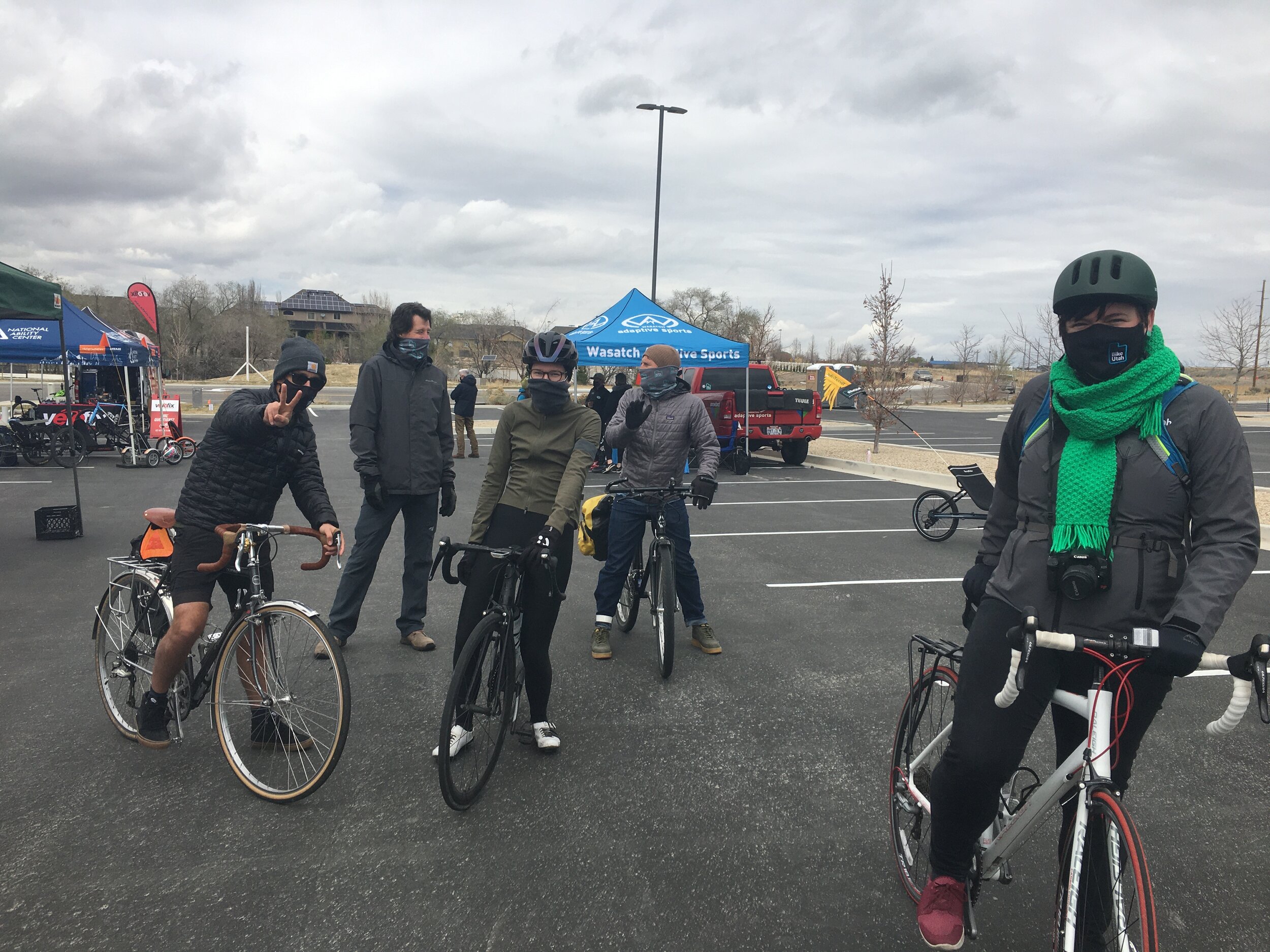


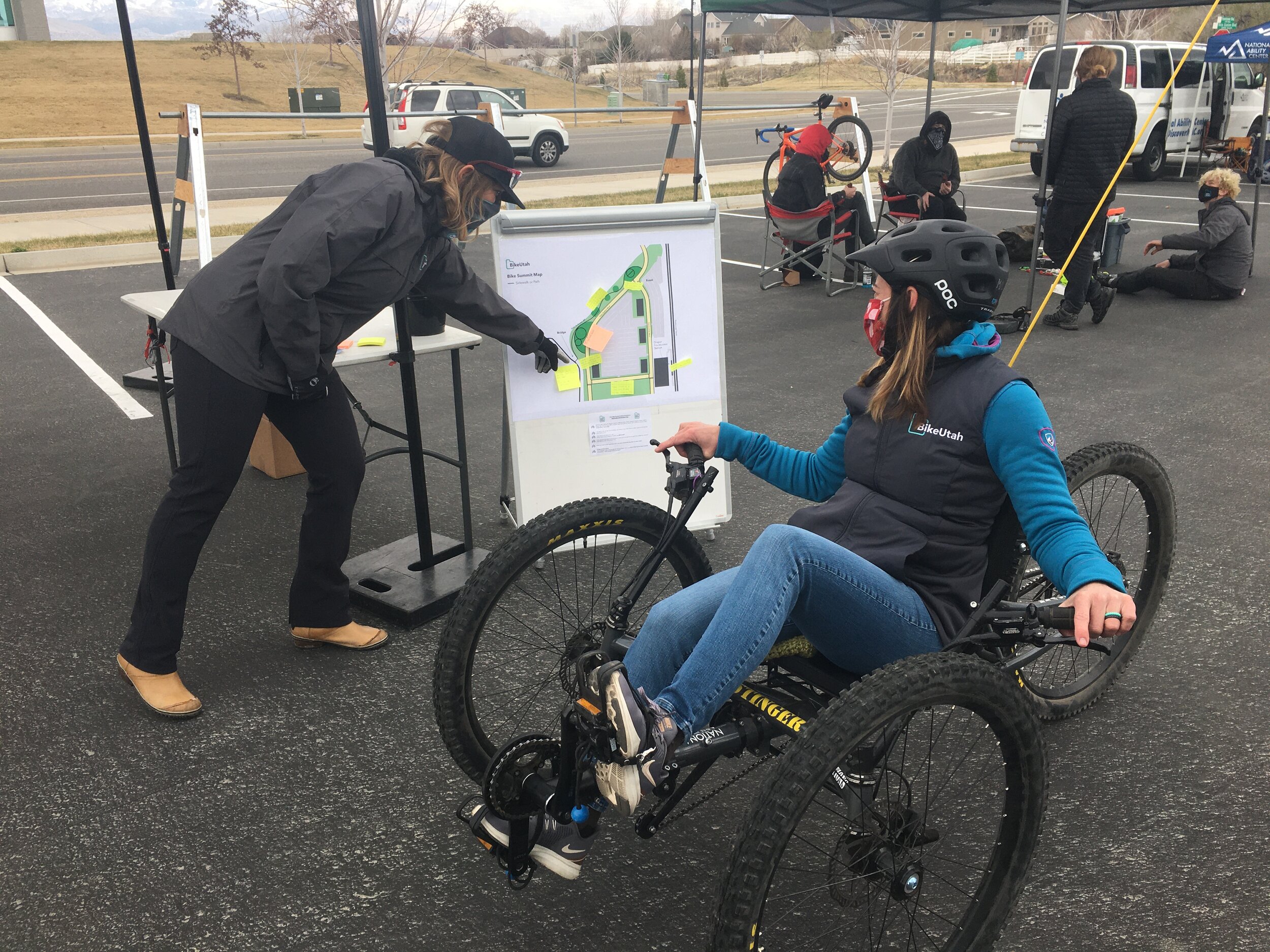
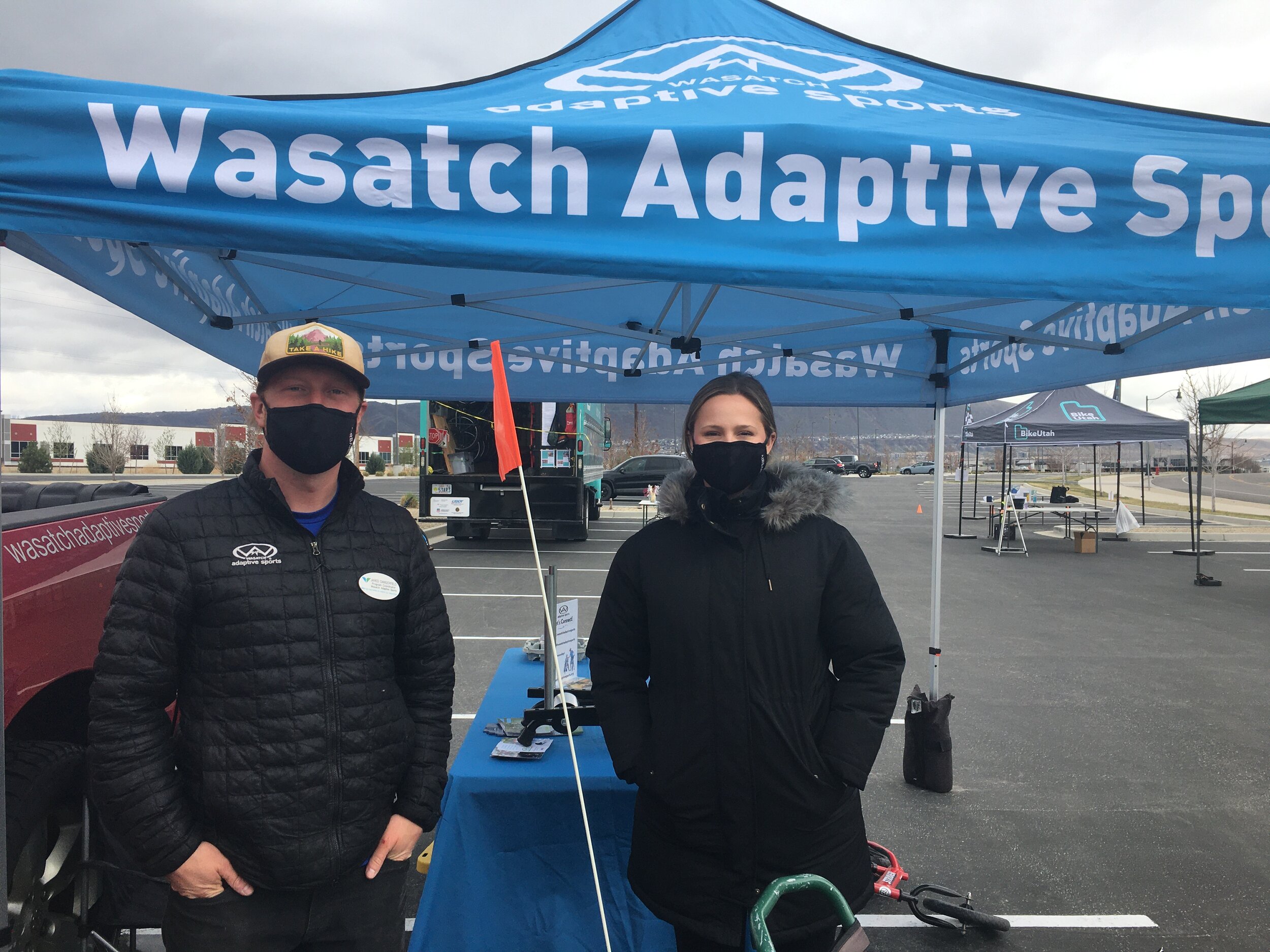
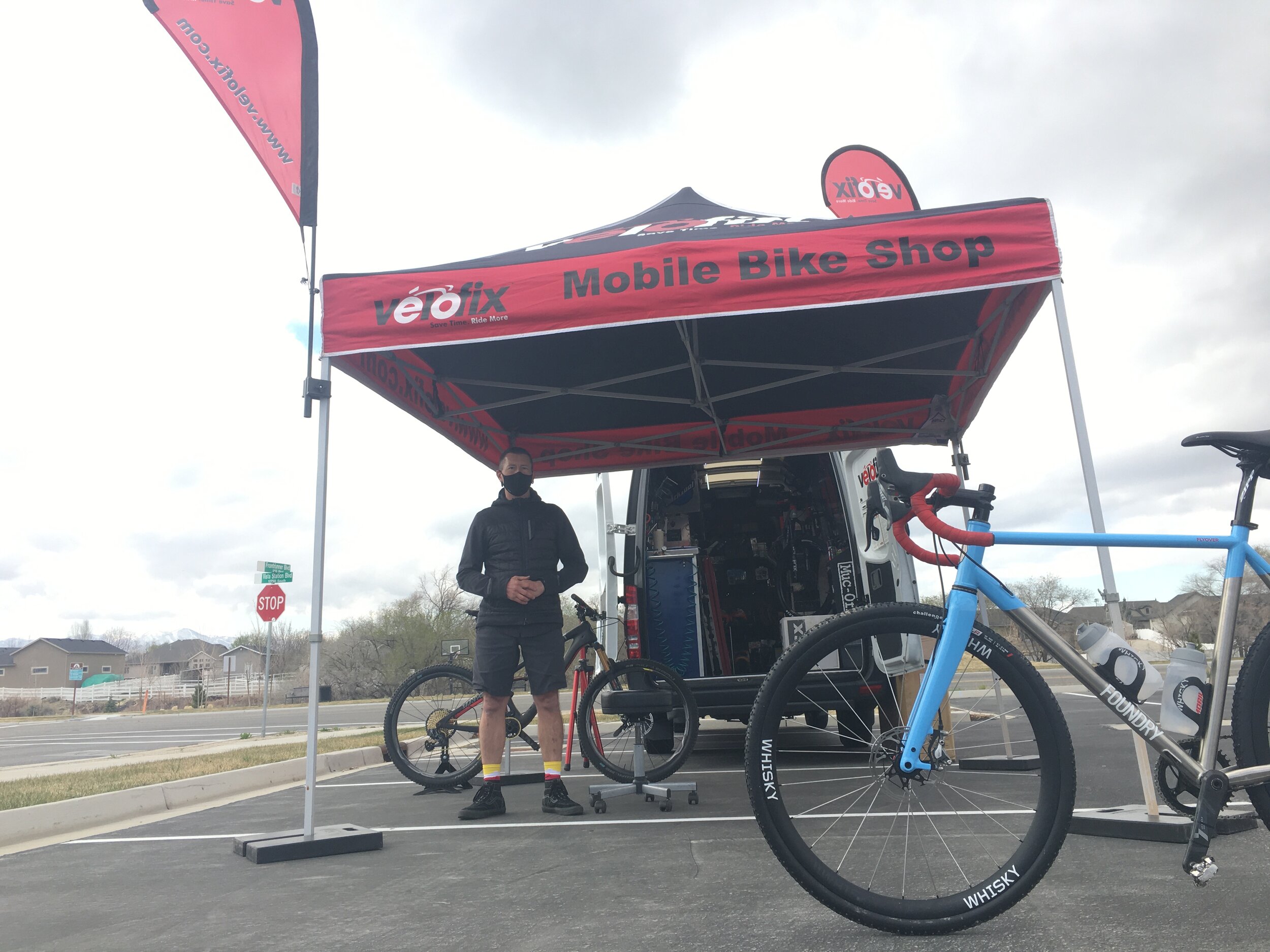
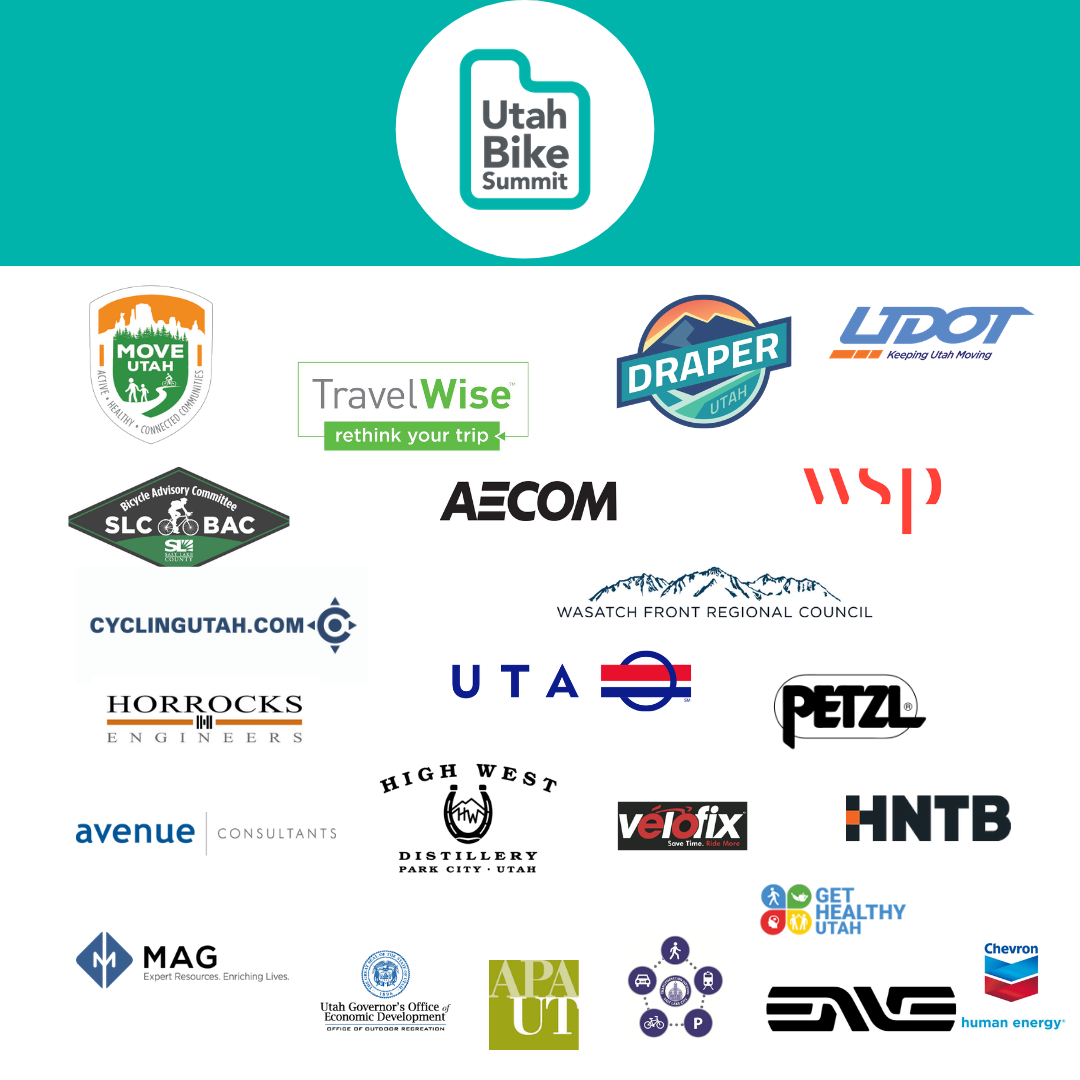
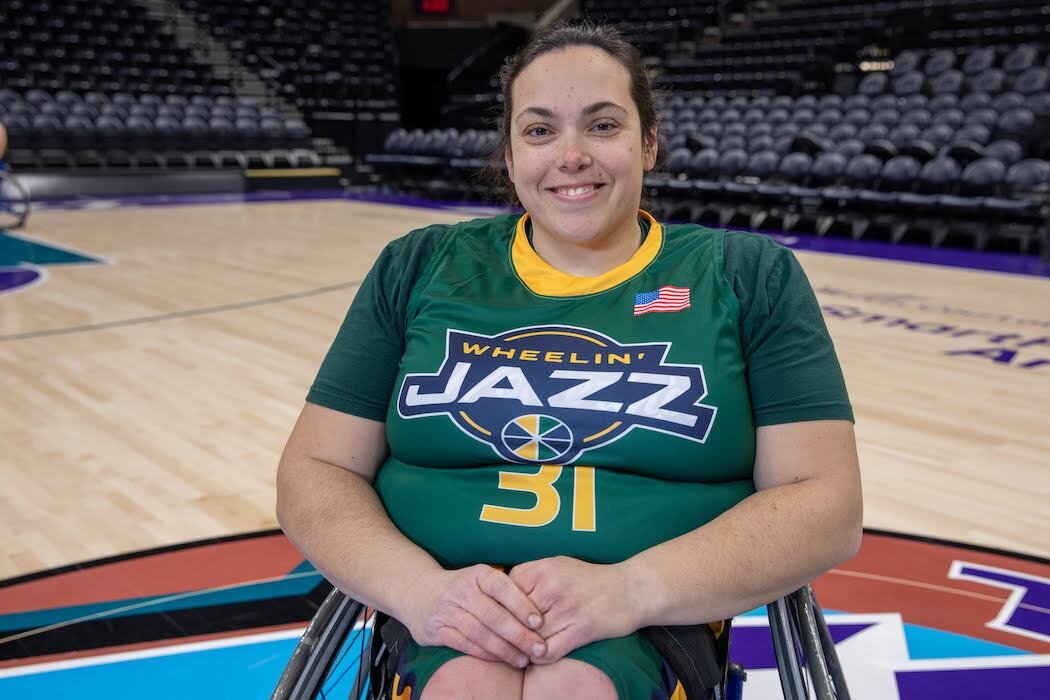
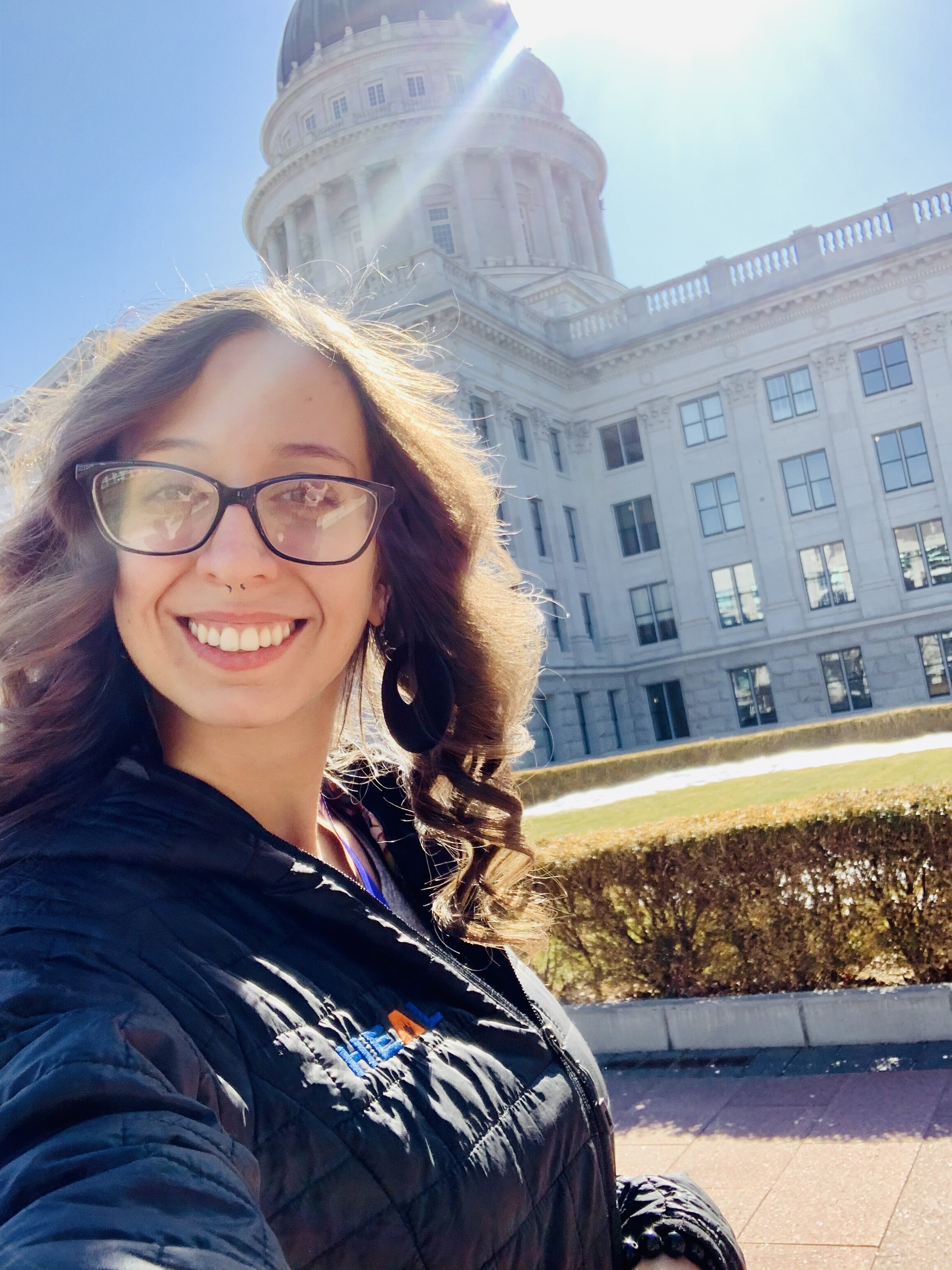

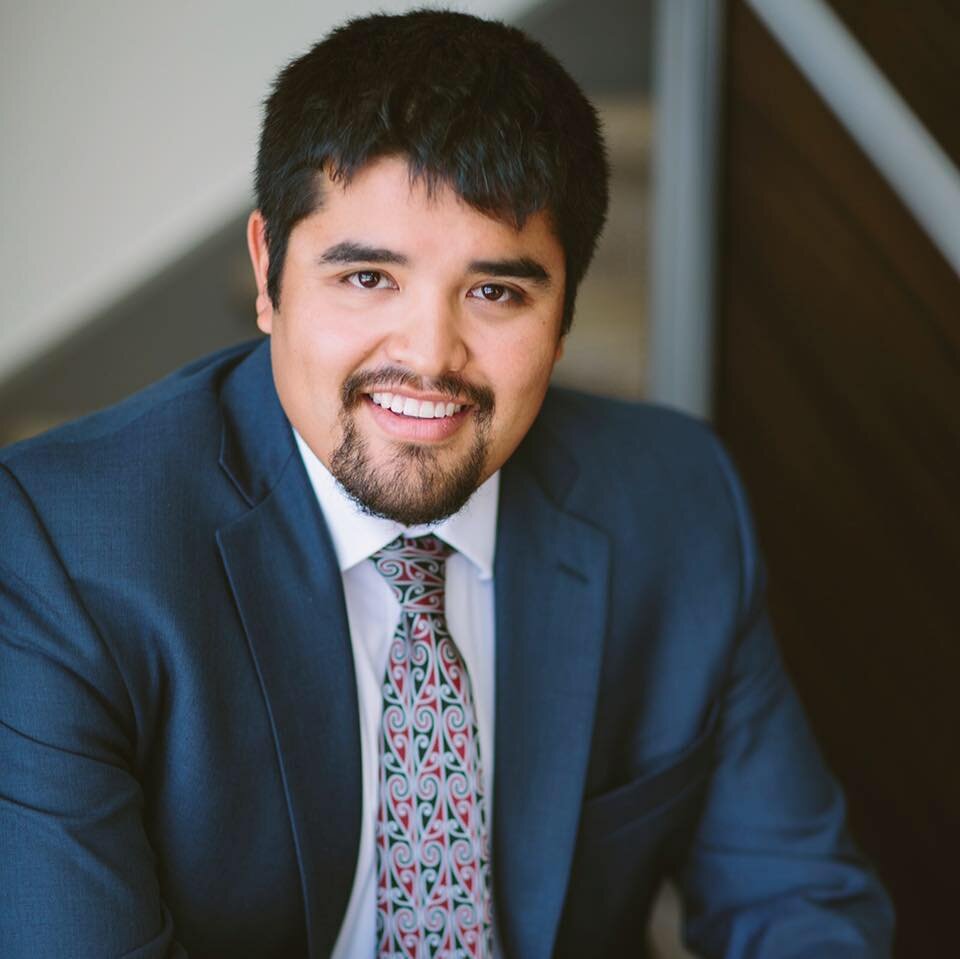
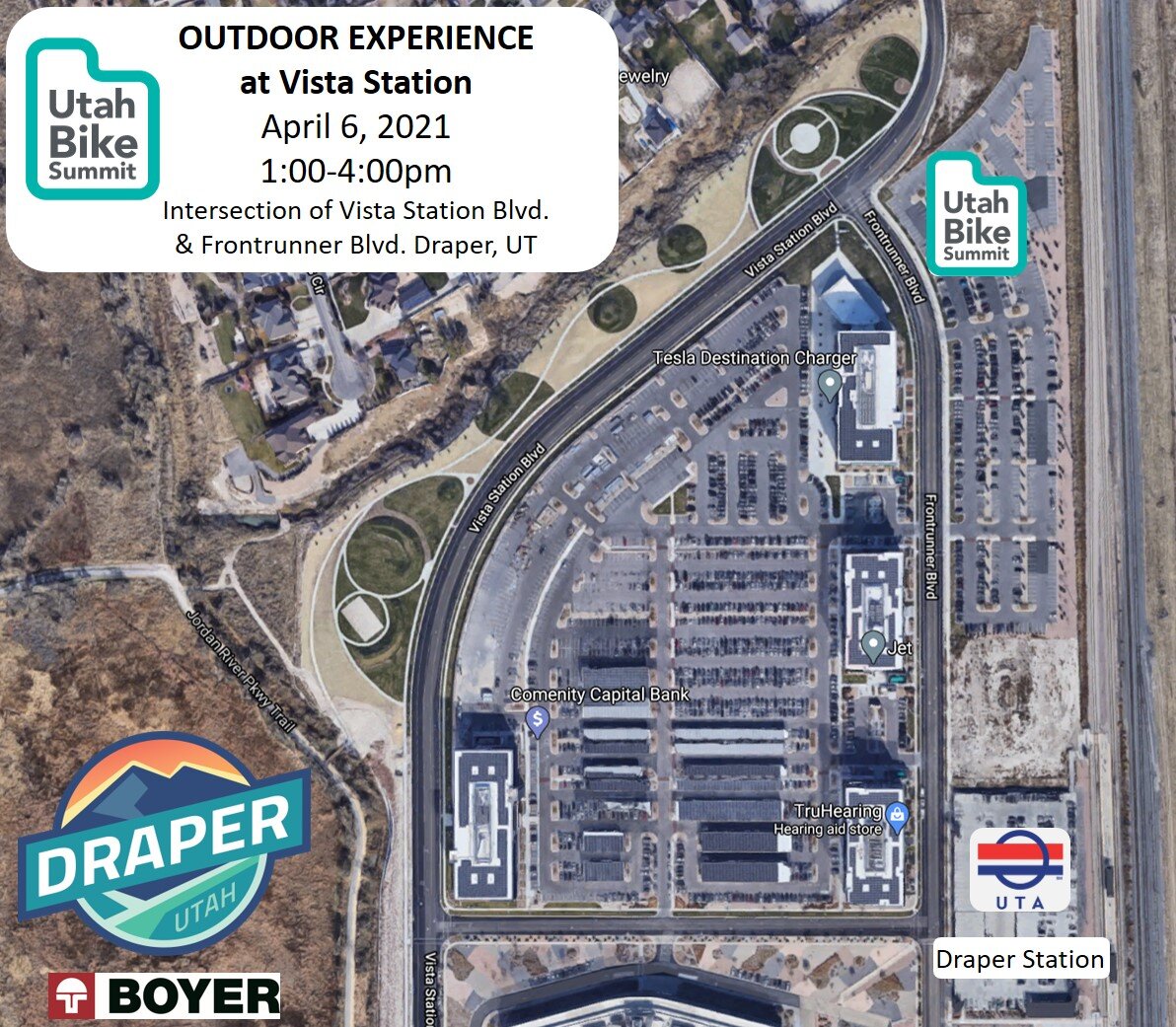
Thank you to all of you who attended the Utah Bike Summit this year! We look forward to seeing you all again next year on April 19th, 2022 at the Davis Conference Center in Layton, Utah. Mark your calendar! Here are a few photos from the events this spring:
What is the Utah Bike Summit?
The Utah Bike Summit is the state bicycle conference, open to bicycle enthusiasts and advocates, elected officials, bike shops, manufacturers, infrastructure engineers, planners, transportation professionals, health officials, tourism professionals, and the general public.
This event features speakers, training sessions, networking opportunities, and discussions focusing on how to make Utah a better place to ride.
2021 Program Snapshot
For this year’s Bike Summit, held March 30-April 1 and April 6, attendees participated in a 3-day Virtual Conference with ~3 hours of speakers, panels, discussions and networking each day, plus a half-day in-person Outdoor Experience!
Virtual Discussions
The 2021 Utah Bike Summit included discussions and workshops on topics including equity, advocacy, and infrastructure. Click the button below to access the presentation recordings.
Outdoor Experience
The Outdoor Experience included Youth BEST demos, test rides, and an interactive infrastructure tour! The tour was put together in partnership with the Utah Transit Authority (UTA) and the Mountainland Association of Governments Transportation (MAG) Tour. UTA provided 20 free passes to utilize the FrontRunner to ride from the Outdoor Experience in Draper to Lehi and back. Participants took the FrontRunner to Lehi and rode through new local active transportation infrastructure.
Online Silent Auction
This year, Utah Bike Summit held its first-ever silent auction. Items auctioned include bike and other outdoor equipment, experiences, gift certificates and more!
2021 Summit Sponsors
The 2021 Utah Bike Summit was supported by the following partners and sponsors:
Presenting:
Supporting:
Sustaining:
contributing:
virtual session:
Silent auction:
Outdoor:
2022 Utah Bike Summit Plans
Next year’s Bike Summit will be held on April 19th at the Davis Conference Center in Layton, Utah. Contact info@bikeutah.org to be notified when tickets go on sale later this year. Contact keili@bikeutah.org for other ways to get involved.
Improving Program Reach: Recumbent Trikes
Accessibility is important in creating equity for all in cycling, and adaptive cycles are a huge factor in creating a more inclusive cycling space where everyone feels welcome and encouraged to ride. In December of 2020, the BEST program acquired two recumbent trikes, Maverick TerraTrike x8s, to use for school programs, allowing students with adaptive needs to more fully participate in the programming, as well as giving non-adaptive students the opportunity to try out and understand the experience of riding recumbent. Before adding these trikes to the fleet, students with adaptive cycling needs were able to use striders (bikes without pedals), or bikes with training wheel stabilizers, but the options were more limited.
Recumbent trikes put less pressure on the rider’s back, knees, and hip joints, and the braking and shifting functions are part of the handlebar grip. After a recommendation from Wasatch Adaptive Sports, BEST moved all the shifting and braking functions to one side of the trike, allowing greater accessibility for riders who might not have full mobility with both arms. At one recent school program, a student with impaired mobility and left side adaptive needs was able to participate in the programming at the same level as their peers because of the trike and its one-sided functions, and they had a blast! At the end of the day they told BEST staff, “It’s great having everything [brakes and shifting] on one side!!”
Wheels for Wellbeing, a UK-based charity that works to increase access to cycling for disabled folks, carried out a survey in 2017 about the realities facing adaptive cyclists. They found that 69% of disabled cyclists find cycling to be easier than walking, and that 1 in 3 had been asked to dismount or walk their cycle, even though they were using it as a mobility aid. They also found that more than a third of disabled cyclists had experienced abuse and hate from bystanders while riding. The cost, infrastructure, and societal barriers surrounding adaptive cycling makes the activity both harder to access and to participate in.
BEST’s new recumbent trikes allow students who need them the ability to participate with their classmates and fully engage with the program’s learning material, as well as giving them an early introduction to cycling that fits their needs. The trikes also allow non-adaptive students to ride recumbent and get a feel for the experience, building empathy and understanding, ultimately helping to break down the barriers of prejudice surrounding adaptive mobility in the cycling community.
Spoke Series July 2021: Celebrating Latinos Afuera
Latino Conservation Week 2021 Spoke Series
Celebrating Latinos Relationship Outside: Bike Utah is excited to invite you to our upcoming SPOKE SERIES DISCUSSION ON JULY 22, 2021, at 7:00pm. This is a conversation with Bike Utah, HEAL Utah, and Latinos Outdoors, who will discuss the Latino community’s relationship with the outdoors during Latino Conservation Week!
Latino Conservation Week was created to support the Latino community by getting into the outdoors and participating in activities to protect our natural resources. The Latino community’s relationship with the outdoors is multifaceted, with a lot to celebrate but also with barriers that need to be addressed.
Advocate of the Month: Kim Bowsher
Name: Kim Bowsher
Pronouns: She/Her
Occupation: Executive Director of the Ogden Downtown Alliance, Owner of kbENT Media and Marketing, and Manager of Wildflower Outdoor
Associated Advocacy Group: Wildflower Outdoor and WomenMTB
Title at associated advocacy group: Actively enthused about biking is the only title I’ve got.
Where is your favorite place to ride in Utah?
This is a hard one! I ride trail and road so I really love riding in Weber County and feel we have an incredible mix of opportunities for this but my most favorite is simply the Ogden River Parkway. It reminds me of being a kid and riding carefree, plus I love seeing the variety of trail users and uses along that gorgeous span of the river. It’s amazing.
What is/was your favorite bike?
For the longest time, I was riding my mom’s bike which was something like a 1995 Giant Rincon. I still have it! It’s heavy and old school but that bike is where I fell in love with riding on my own - not because I was doing what my parents were, or anything else, just riding and exploring because it felt good. That bike will always be special to me for that reason.
How did you build your relationships with your Wildflower Outdoor and WomenMTB?
I think meeting people where they are is huge and most people are just looking to have fun, so meeting them in that purpose first and foremost but then letting that leak into the edges of what’s going on in their day, their lives, introducing them to bike infrastructure concerns and needs, demonstrating how they can be a part of the dialogue. Letting people be whole people when they come to a ride instead of just “ride buddies” is really huge.
Additionally, there are so many new cyclists right now and I love getting to be a part of building that awareness of trail etiquette and advocacy for the systems we all are using. For me, I think this is one of the biggest ways we can be advocates for the cycling community: demonstrating appropriate use, care, and investment.
What is the most important piece to the puzzle in making cycling more inclusive for women?
I really believe in women’s specific training and group ride opportunities. Watching other women conquer a trail feature right in front of you just teaches your body and brain that YOU CAN TOO in a way that is so much different than co-ed rides. It’s something we talk about a ton with both Wildflower Outdoor and WomenMTB, women will join these groups because they’ve old had the opportunity of riding with men and they share funny stories of why that just didn’t resonate and what it means to find a group of women to ride with - there’s something really special there.
How do you find time for this work?
I think the work is so much a part of my life that it feels like a natural existence for me - when it doesn’t feel natural I have to ask myself if I should be there or if I should be supporting in a different way.
What do you find the most rewarding about your work?
Selfishly and honestly: having more places to ride and people to ride with! Best!
How do you make sure you are taking care of yourself and avoiding burnout?
I probably still need lessons in this but I am getting better at recognizing when I’m tired versus just not wanting to do something and I’m so much better these days about telling myself that rest is essential in maintaining this work long-range.
What future projects do you hope to see happen?
There are so many incredible projects coming down the line that I could easily say I want to support but I think a big gap is in signage. I would really love to see more trail signage that has etiquette reminders, especially on multi-use systems.
What advice do you have for someone who wants to get involved with bicycle advocacy, but has no idea where to start?
Ask questions! I got involved originally because I started asking questions in coffee shops and at bike meetups and at my local government level, people will point you to the do-ers and movers and you’ll become one too!
How can we engage future generations to continue advocacy work?
I believe getting future generations out in nature and engaging them in recreation while educating them on the sustainability and responsibility piece are essential. The more opportunities we can get kids into nature and appreciating nature, the more they’ll be invested in protecting it. I have two boys and this is how we approach every camp adventure, hike, bike, climb, they know they are lucky to have these opportunities and they want to protect them.
Do you have a follow-up question for Kim? Would you like more info about your local bicycling advocacy group or have a specific active transportation project you’d like to see initiated? Do you know an advocate we should highlight? Email info@bikeutah.org!
Spoke Series: Respectfully Cycling Bears Ears
Respectfully Cycling Bears Ears
Bike Utah is excited to invite you to a Spoke Series event on June 16, 2021 at 7:00pm.
Bears Ears Monument has been increasing in popularity with Bikepackers and Mountain Bikers. If you are considering riding in the beautiful and sacred landscape there are a few things you should know before you make your trip. Bears Ears is full of sensitive natural and cultural resources including ancestral lands that are still utilized by Indigenous peoples today.
Join us via Zoom for a conversation with three Bears Ears Monument managers who will share the dos and don’ts of how to visit with respect--especially catered to cyclists. We will hear from:
Jake Palma, the Monument Manager for Bears Ears National Monument who has built a career out of bringing the voices of diverse communities into public land management discussions to find integrated solutions in Utah
Jason Byrd, a former Park Ranger and Forest Service employee, who now holds the position of Outdoor Recreation Planner at the BLM Monticello Field Office
Shirley Cloud-Lane, who is Saltwater Clan of the Navajo, born for the Capote Band of the Southern Ute. She is currently the Native American Coordinator for the Monticello Field Office, and her previous work experience includes the National Park Service, Navajo Nation Parks and Recreation, the Smithsonian Institution National Museum of the American Indian
Come listen and learn with us as we hear more about this beautiful Utah landscape. Register at the button below!
The discussion around the potential changes to the Bears Ears monument is ongoing and the staff cannot discuss it at this time. Therefore, we will not be including that in this conversation.
Alpine Loop Highway Construction Updates
While planning your next summer cycling adventure, make sure you’re aware of the current construction and closures on the Alpine Loop Highway.
From now until early July, UDOT crews will be hard at work chip sealing S.R. 92 over the Alpine Loop Highway. This means that sections of the road between Pine Hollow Trailhead and Provo Canyon will be under construction, closed, and especially dangerous for cyclists and pedestrians. There are three sections to be aware of:
Section one, which is S.R. 92 from the Pine Hollow Trailhead to the Timponeeke Campground, will be closed from 6 a.m. - 10 p.m. on Monday, June 7 and from 9 a.m. - noon on Thursday, June 10. All other times this section will be open, but regulated with one-way traffic flagging.
Section two, between the Timpooneke Intersection and Mount Timpanogos Campground, is completely closed to all traffic, which includes cyclists and pedestrians. Surrounding areas of the road will have one-way flagging and large traffic disruptions throughout the project’s duration.
Section three is from the Mount Timpanogos Campground to U.S. 189 in Provo Canyon. This segment will remain open, though regulated with one-way traffic flagging.
It’s important to keep in mind that, as an active work zone, these areas are particularly dangerous for cyclists and pedestrians! Any signs marking closures or one-way traffic regulation should be followed closely, for the safety of everyone involved. With so many other great road ride options in the area, this route is best saved for an early fall adventure, on a freshly chip sealed road!
To see a map of the sections and read about their closure status, follow this link to the UDOT project summary: https://www.udot.utah.gov/projectpages/f?p=250:2007:0::NO:2007:P2007_EPM_PROJ_XREF_NO,P2007_PROJECT_TYPE_IND_FLAG:13976
Tweet prepared by UDOT: UDOT will chip seal the Alpine Loop (SR 92) from Pine Hollow to US 189 in Provo Canyon in segments. To prepare for this work, Segment 2 will remain closed on Memorial Day weekend through early July. For more info on traffic configurations visit udot.utah.gov/go/alpineloop
Facebook Post made by UDOT: The Utah Department of Transportation (UDOT) will chip seal S.R. 92 over the Alpine Loop from the Pine Hollow Trailhead to U.S. 189 in Provo Canyon in Utah County. This work will take place in June and early July 2021. In preparation for this work, a segment of the Alpine Loop from the Timpooneke intersection to the Mount Timpanogos Campground will remain closed on Memorial Day weekend through early July. For more information on construction impacts, visit udot.utah.gov/go/alpineloop or contact a project representative at afcanyon@utah.gov or 385-501-2100.
Ride UTA With A Bike
Part 1: How to Ride a Bus with a Bike
Taking your bike on the bus is a great way to commute longer distances to work, family, or recreation!
Watch the video below to see how to load your bike onto the front of the bus:
Helpful Tips for taking your bike on the bus:
Wait for the bus to come to a complete stop.
Let the bus driver know that you are putting your bike on by waving at them or making eye contact before proceeding to the front of the bus.
Lower the bike rack - there may be labels to help you position your bike correctly.
Secure your bike.
If you are struggling, ask the bus driver for help.
Remember to remove items that could fall off your bike.
Pay for your ride.
If you want, get a bike card from the bus driver to hand to them as you get off to remind them to give you time to grab your bike.
As with any situation, remember to be mindful of your surroundings as you take your bike on and off of the bus rack.
Be sure to follow current safety guidelines when utilizing public transportation. Visit rideuta.com before you ride!
UTA has made significant improvements to both bus coverage and frequency over the last few years. This is a great time to try bike + bus for your next trip
Part 2: How to Ride FrontRunner with a Bike
Riding your Bike to the FrontRunner eliminates harmful emissions and also makes you feel great after getting some exercise!
Watch the video below to see how to ride the FrontRunner with your bike:
Helpful Tips for taking your bike on the FrontRunner:
Look for the train car with the bicycle image to know which car is meant for your bicycle.
Keep your bicycle and body behind the yellow line until the train has stopped.
Open the door and remember to allow other passengers to exit before you go in.
The FrontRunner is level to the platform so you can roll your bike into the train car.
Find a spot on the rack to store your bike for the ride. If the train is full, you may need to stand with or near your bike for your ride.
Do your best to keep your bike, saddle bags or other items out of the aisles so people can safely pass.
Before you arrive at your station, gather your possessions and your bike so you will be ready to go.
Remember to always walk your bike when on the train platform.
Be sure to follow current safety guidelines when utilizing public transportation. Visit rideuta.com before you ride!
Taking your bike on FrontRunner is fun and can make getting around your destination much easier!
Part 3: How to Ride Trax with your Bike
Taking your bike on TRAX is a great way to get around Salt Lake City and some of the surrounding areas. Using your bike helps you make your connections to and from your destination.
Watch the video below to see how to take your bike with you on TRAX:
Helpful tips for taking your bike on TRAX:
While you wait at the station, keep your feet and your bike behind the yellow line.
Use the front or the back cars to bring your bike on TRAX for more to maneuver your bike.
Wait for the train to stop and allow other passengers to exit before loading into the car.
On some of the older trains you may need to pull your bike up a few stairs.
Do not store your bike in the stairwell as that can cause delays and potentially damage your bike or the doors.
Newer TRAX cars and the S-Line have a lower floor so you can roll your bike onto the car.
Newer TRAX cars also have bike hooks. Follow these steps to use them:
Lift your bike vertically.
Put your front tire in the hook and your back tire in the groove at the bottom.
Remove items from your bike or they may fall off.
If there is an available seat, you can feel free to sit. If not, stand with your bike and hold onto the poles while the train is moving.
Before your station comes up, be ready ahead of time by gathering your things and having your bike ready to get off.
Remember to tap off if you used an electronic fair.
Be sure to follow current safety guidelines when utilizing public transportation. Visit rideuta.com before you ride!
Part 4: How to Use Other UTA Bike Amenities
Sometimes, you may not want to bring your bike with you after taking transit. In this case, UTA bike lockers may be useful to store your bike securely while traveling.
Watch the video to see how to use the Bike Lockers at transit stations around the Wasatch Front:
Helpful tips using a bike locker or utilizing bike stations:
You can rent one of UTA’s long-term bike lockers at the station. They are the red, white, and blue metal lockers located near stations.
The silver lockers are e-locked. People use them for short-term storage and they cost about $.05 per hour.
Bike Repair stations are available at several UTA stations. They have the tools you will need to make basic repairs to your bike, from changing your tire to adjusting your brakes.
Thank you for looking for ways to utilize active transportation in your daily life. The fewer car trips we make, the healthier and happier our community will be.Visit rideuta.com/bikes for more details and information about utilizing UTA in your daily commute!
Help to Plan the Point!
What is “The Point”?
The 600 acres of state-owned property at the current site of the Utah State Prison is called "The Point." In the heart of Utah’s burgeoning high-technology sector, centrally located between Utah’s two most populous counties and well served by high-capacity transportation infrastructure, The Point is arguably the most significant development opportunity in state history.
Take the Survey
The Point is owned by all Utahns so all Utahns will have an opportunity to actively participate in planning for its future. The draft plan has been released and they want to hear from you! Take our brief, 5-minute survey at bit.ly/planthepointsurvey. The survey will be open until Friday, May 28 at 5 p.m. MDT.
Attend the Open House
Attend their upcoming virtual open houses to get involved in helping to Plan The Point! The next virtual open house is scheduled for Thursday, May 20 from 2 p.m. to 4 p.m. The open house provides an opportunity for the public to engage directly with The Point’s subject-matter experts. Visit bit.ly/planthepoint to register in advance and participate during the scheduled meeting time. Advanced registration is encouraged but not required.
More information about these opportunities can be found at thepointutah.org/master-plan.
Advocate of the Month: Eric Arce
Name: Eric Arce
Pronouns: He/Him
Occupation: Freelance Photographer
Associated Advocacy Group: Pedal2ThePeople
Title at associated advocacy group: Founder
What is/was your favorite bike?
My first bike was a teenage ninja turtle BMX bike and it’s still one of my favorites. For mountain biking, my go-to mountain bike is the Stumpjumper.
How did you learn to ride a bike?
My dad taught me how to ride a bike, like most people I started with training wheels. I grew up in a relatively small place where BMX jumps were the thing to do to pass the time. It was such a great way to play with neighborhood friends.
Where is your favorite place to ride in Utah?
My favorite place to ride is Eagle Mountain. I love that I can ride it after work. I love the flowy trails and wide-open views. It’s really different from the rest of the riding in Utah. The trail builders did an amazing job out there.
What is your preferred type of riding and how did you get comfortable with it?
It’s definitely mountain biking. I used to live in a ski town and my brother got me a mountain bike when I first moved there. From there I was hooked. I literally broke every part that came on that bike. I wanted to get a new one, but bikes are expensive, so I had to work several jobs to upgrade.
How did Pedal2thePeople begin?
I helped co-found Pedal2thePeople with my friend Rachel Olzer to improve representation in the cycling community. We wanted a more inclusive space where people can share their stories openly and without judgment. We want to highlight people’s stories that aren’t often seen but are vital. I love sharing stories from people we can learn from.
Pedal2thePeople
Co-founder: Rachel Olzer
What is in store for Pedal2thePeople?
One of the beautiful things with pedal2thepeople is seeing the growth and support of the community in the last year. We get a lot of messages of how much folks love seeing people’s stories and how it impacts them positively. We’re hoping once it’s safe again, to have an annual meetup where folks can ride together. An annual meetup where people can feel comfortable biking together and where we share the joy we have of biking.
What do you find most difficult about doing your work?
Sometimes there is pushback from folks that don’t want to hear about how the bike community can be more inclusive and welcoming. These people fail to understand how biking can be a place to make positive changes. A lot of folks tell us to just pedal and have fun. While biking is fun, the bike community still needs to fix a lot of its past and current mistakes.
While we get pushback, we don’t waiver on what we believe is true: everyone’s story is uniquely important. We believe the narratives of people of color that have largely been ignored need to come to the forefront of the biking community.
What would you want the cycling community to know in Utah to better support your work in making the outdoors more inclusive?
One thing is to be more welcoming but really go outside your initial friend network and ask for diverse models and photographers for ads or media outreach.
Sometimes in cycling, there is a tendency to scrutinize riders based on the newest bikes or fanciest components. While those things are great sometimes, at the end of the day it doesn’t matter what type of bike the person has. The biking industry and community are trapped in how a cyclist is supposed to look or what they’re supposed to ride. There is no right way to bike and there is no right type of bike, so it’s important to stay away from judgmental attitudes where people are made to feel bad about the gear they have.
What do you find the most rewarding about your work?
I love giving people a space to share their stories and for them to get positive feedback. Often folks get disillusioned in the bike community, so I want to create a space where folks feel heard and seen.
How do you ensure that they feel comfortable and safe to share their stories?
One thing that’s important in storytelling is to make people feel comfortable by checking in with them before an interview by asking if it’s okay to talk about certain themes. It’s critical to assure folks that they don’t have to talk about anything they don’t want to. You have to be careful with particular stories as to how you interview folks can surface a lot of painful memories. We want people to feel hopeful after interviews since we really strive for people to feel validated and supported on our page.
How does your photography influence your advocacy?
From the beginning, I wanted to photograph people that I felt were underrepresented in biking. There’s a tendency in mountain biking especially in imagery and storytelling to be homogenous and repetitive with the type of stories that bike magazines put out in circulation. I always felt that there were so many unique stories out there. Biking is done by so many people for so many reasons, that I wanted to move beyond the typical shoots. While I love beautiful locations as much as the next person, I also wanted to redefine what people frame as beautiful. Photographing mountain biking trails in areas like Switzerland is of course amazing, but I also think there’s beauty in the ways Latinxs design lowrider bikes, or how people use biking to alleviate the effects of depression, or how BIPOC simply find joy on two wheels.
How can we engage future generations to continue advocacy work?
One way is to make sure folks see themselves as part of the biking community. If kids of color see themselves as possible changemakers and future cyclists, then they’ll want to be part of the bike community that much more. If they feel respected from the beginning, then they’ll dedicate more energy to the bike community. If you are unwelcoming or disrespectful, then that will turn off future advocates. Being welcoming and equitable benefits everyone and only makes the bike community stronger.
Do you have a follow-up question for Eric? Would you like more info about your local bicycling advocacy group or have a specific active transportation project you’d like to see initiated? Do you know an advocate we should highlight? Email info@bikeutah.org!
Spoke Series: Launch of the New Advocacy Toolkit
Whatever it is, the way you tell your story online can make all the difference.
Spoke Series Event Announcement: Public Launch of the new Bike Utah Advocacy Toolkit
Bike Utah is excited to launch a new Advocacy Toolkit. Bicycle advocacy begins with you! Change in your community requires knowledge of your neighborhood and its particular issues. This toolkit is here to help you know how to share that knowledge and get it into the right hands.
Bike Month is a perfect time to connect with resources that will help you build a better community through cycling. You're invited to the public launch of the new Cyclist Advocacy Tookit on May 18th at 7pm mst! We hope you join us in this presentation and workshop format discussion. You'll learn (or get a refresher) on how to advocate for trails and bike pathways in your own community.
Topics include:
Having a clear vision
What you should want in your neighborhood
How to engage stakeholders
How to build relationships with your local city officials
How to implement your ideas, and much more
This event is free and hosted on zoom. Click here to register.
Whatever it is, the way you tell your story online can make all the difference.
We hope you consider making a donationto our Bike Month fundraiser! We set out on a goal to raise $10,000 until May 30th to help communities across the state build safe bike paths and trails - this includes programming like offering this new Advocacy Toolkit for people across Utah.
We're excited to offer a 2021 Bike Month Sticker for gifts of $50 or greater toward this amazing effort!
*stickers are limited and will be given to the next 94 supporters. Click here to make a gift to Bike Utah and the programs that keep cyclists safe across Utah.
Thank you so much for your support! Keep pedaling!
Advocate of the Month: Tina Medley
Name: Tina Medley
Pronouns: She/Her
Occupation: Branding Account Specialist
Associated Advocacy Group: Beehive Bike Polo Club
Position at associated advocacy group(s): We don’t have labeled roles at Beehive Bike Polo Club (BBPC ) but I tend to find myself in the organizing body. If I were to label myself, I’d say I play a part in the following roles -- club ambassador, social media coordinator, and community relations manager.
What was your first bike?
My first bike as a child was probably a Huffy. My first bike as an adult, a Huffy! I found it at a thrift store and I was over the moon. It was a step-through frame from the 70’s, with orange and brown details. I thought it was the coolest.
Where is your favorite place to ride in Utah?
I love riding trail in Moab and Gooseberry Mesa! There are so many places I have yet to explore though. In SLC I enjoy pedaling City Creek and the Jordan River Parkway. They are such tranquil and beautiful rides right in our backyard.
How did you learn about Bike Polo?
I lived in Milwaukee in my early 20’s. The fixie bike scene was at its peak and the niche sport began gaining traction all over the US. I learned about bike polo through some friends, watched some games, and was hooked! It took me a while to gather enough courage to play since no women played in Milwaukee at the time. With a bit of coaxing from a girlfriend, we started playing together and the rest is history.
what is Bike Polo?
Bike Polo is a worldwide sport that began in the 1800s as a derivative of horse polo. Originally hosted on grass fields the sport has now transitioned to hard surface courts. Bike polo begins with two teams of three players, players must stay on the bikes at all times. Using the mallet to move the ball, players will attempt to score a point by shooting the ball into the opposing team’s net. The duration of the match is 12 minutes or until a team scores 5 points.
How did you build your relationship with Beehive Bike Polo?
I moved to SLC 6 years ago and instantly bonded with the Beehive Bike Polo. We didn’t have courts back then so we played wherever we could: tennis courts, parking garages, and parking lots. It wasn’t ideal. I ended up spearheading a mission to find city-sanctioned courts which became the catalyst for my continued involvement in the organizing body of the club.
“Beehive Bike Polo applied for a grant from Utah’s ZAP (Zoo, Arts and Parks) program. Approved for $25,000, the Beehive Bike Polo Club awaits the finalization of the grant to claim a space, transform an existing tennis court, compile gear and start a youth bike polo club in Glendale. Although the club received a bit of pushback from the tennis community, the idea is to transform one of the tennis courts into a multi-use sports court for things other than bike polo, too, like roller skating, roller derby, and tournaments. The court and youth bike polo club would serve more than just a small part of the community and diversify park activities.”
How does Beehive Bike Polo promote cycling among your group?
BBPC promotes cycling by encouraging anyone who shows interest to get on the court and feel it out. We’re always looking to expand the club and strive to create a welcoming environment at the courts.
Pictured: Three players pre joust.
To make the sport more accessible, we have hosted rookie nights and WTF (women/teams/femme) nights. Programming was on hold due to the pandemic but we’re hoping to start up again in the summer.
We promote cycling among our group by scheduling polo weekly. Occasionally we do group social rides and trail rides. Many of us ride mountain bikes so we’re always trying to get clubmates to jump on that train.
What advice do you have for someone who is interested in Bike Polo, but has no idea where to start?
Beehive Bike Polo plays at least twice a week, usually on Tuesday, Thursday and/or Sunday at the Jordan Park Courts. Just pull up and let us know you’d like to play!
We have loaner bikes, mallets, and safety equipment for new players.
People can also reach out to us via Instagram, Facebook messenger, and or email.
How do you make sure you are taking care of yourself and avoiding burn out while participating in Bike Polo and working?
It took a while to find the balance and sometimes it still gets away from me. I used to try to cram maximum fun and productivity in each day which is never sustainable. Through the years I’ve learned to build awareness of my needs through regular mental and physical check-ins. WIP for sure. I’ll also reach out to my clubmates for help if I’m feeling super overwhelmed. The club has accomplished so much by working together toward our shared goals.
Do you have a follow-up question for Tina? Would you like more info about your local bicycling advocacy group or have a specific active transportation project you’d like to see initiated? Do you know an advocate we should highlight? Email info@bikeutah.org!
We are Hiring!
Come be our Next Youth Program Manager!
The Youth Program Manager works collaboratively with and oversees the success of the Youth Program team to implement all aspects of the Youth Bicycle Education and Safety Training (BEST) Program. The Youth BEST Program is a four-hour curriculum that includes on-bike training geared towards students in the 4th, 5th, 6th, and 7th grades across all of Utah. The program gives participants the skills and knowledge necessary to safely and confidently get around by bicycle. The program reaches more than 3,000 students each year and we’re working to scale this to even more students in 2022. More information about the program can be found at bikeutah.org/youth.
As the Youth Program Manager you will have a chance to help shape the future of cyclists in Utah. You will get to work with Bike Utah’s dynamic team and the team of four staff members to implement the Youth BEST program throughout the state. Click the button below for the full job description and details on how to apply.
Announcing: Advocate of the Year
Utah is filled with people who are working to make Utah a better place to ride. We are excited to continue to celebrate those people through our Advocate of the Month program and expanding it to include Bike Utah Advocate of the Year program.
Begin thinking of the people in your life who exhibit a dedication to making Utah a safer and better place to ride! We will share more details on how to nominate someone this summer so stay tuned.
We will announce the Advocate of the Year at the 2022 Utah Bike Summit which will be held on April 19, 2022 at the Davis Conference Center in Layton, Utah.
If you have any questions, please don’t hesitate to contact us at info@bikeutah.org.
Feel free to continue nominating the Advocate of the Month! And, check our incredible list of previous Advocates of the Month below:
Bike Utah’s Book Club
Bike Utah envisions a Utah where everyone can ride regardless of age, ability, race, or income. A critical part of our efforts in creating a more inclusive riding community is Bike Utah’s Book Club. Our book club will be curated with a series of articles, essays, and books; supporting our journey to educate ourselves on a deeper level of the barriers to cycling people may face in regards to race, sex, ability, and socioeconomic backgrounds.
Our reading of the month was Honoring the Founding Mothers of Biking During Women’s History Month, an article detailing the history of women and bicycling from three key figures: Kittie Knox, Annie “Londonderry” Kopchovsky, and Maria E. Ward. We invited staff to share their reflections or response to this month’s readings below:
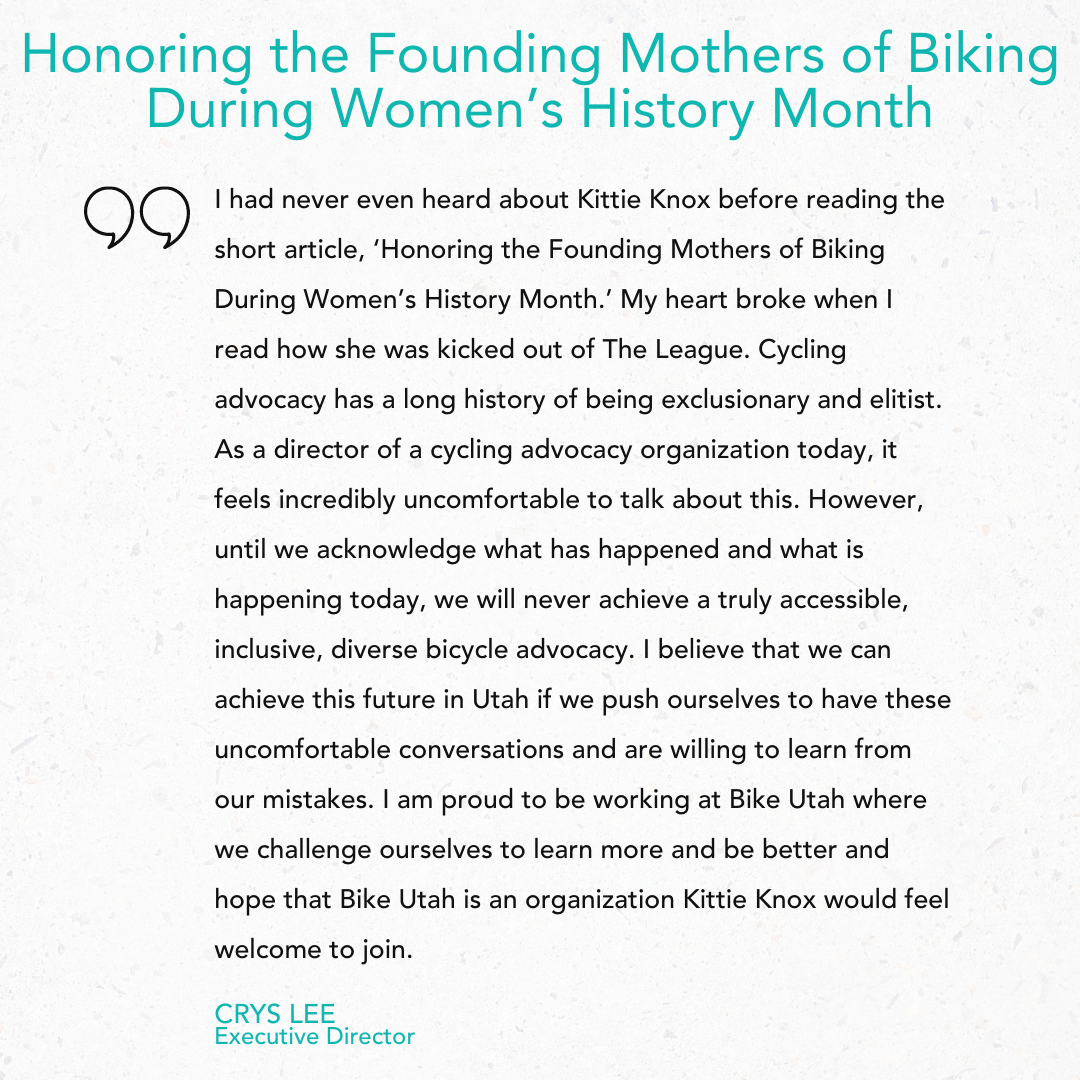
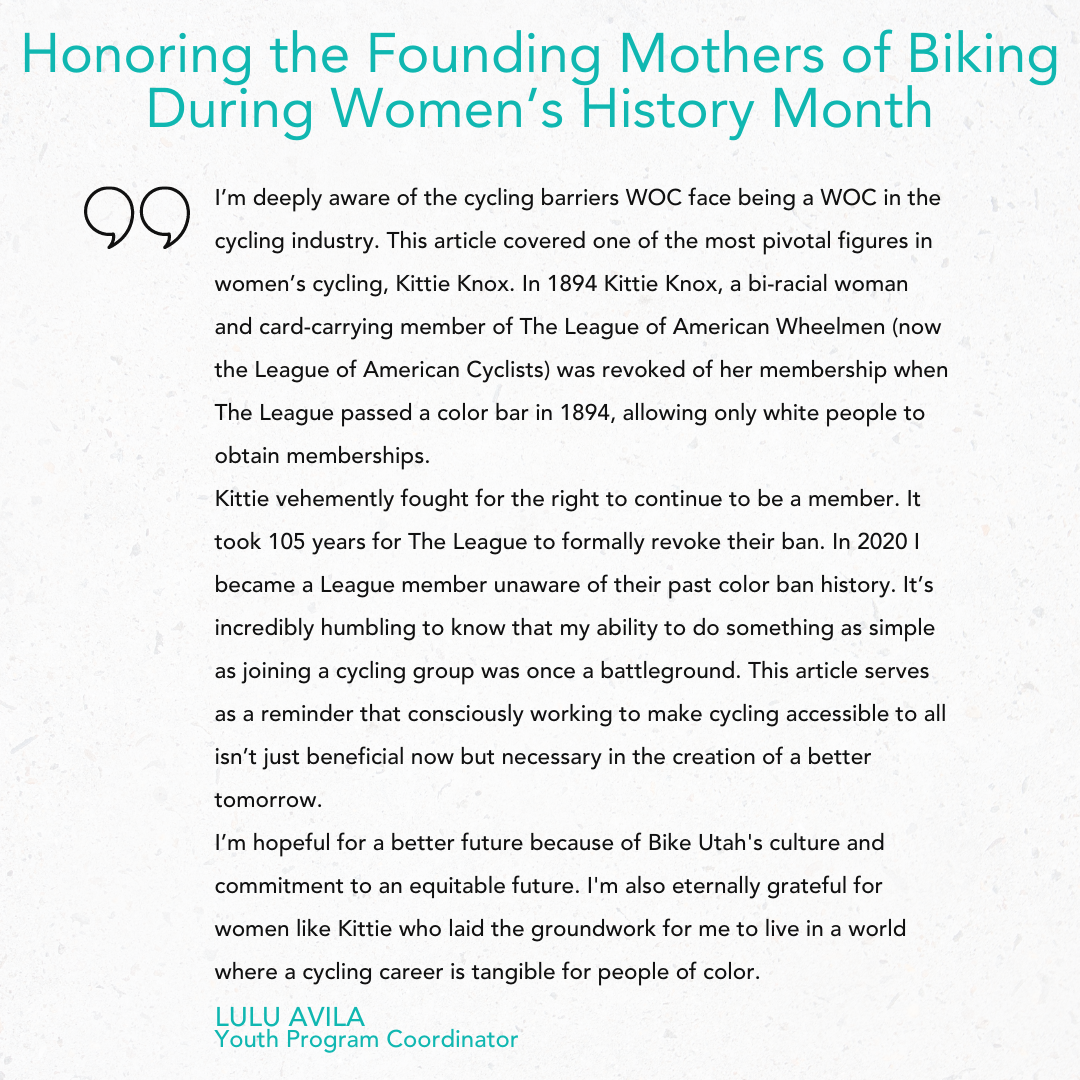
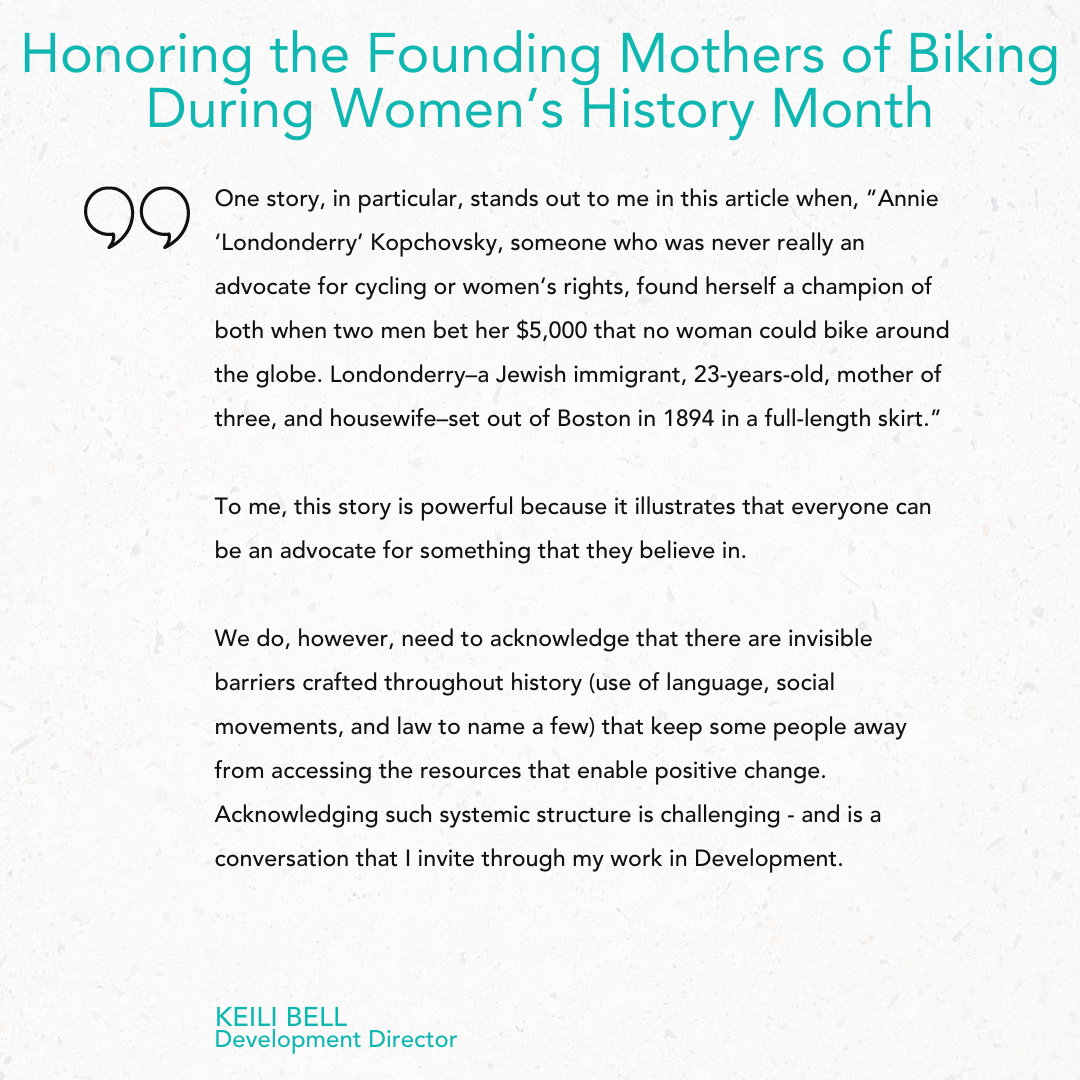
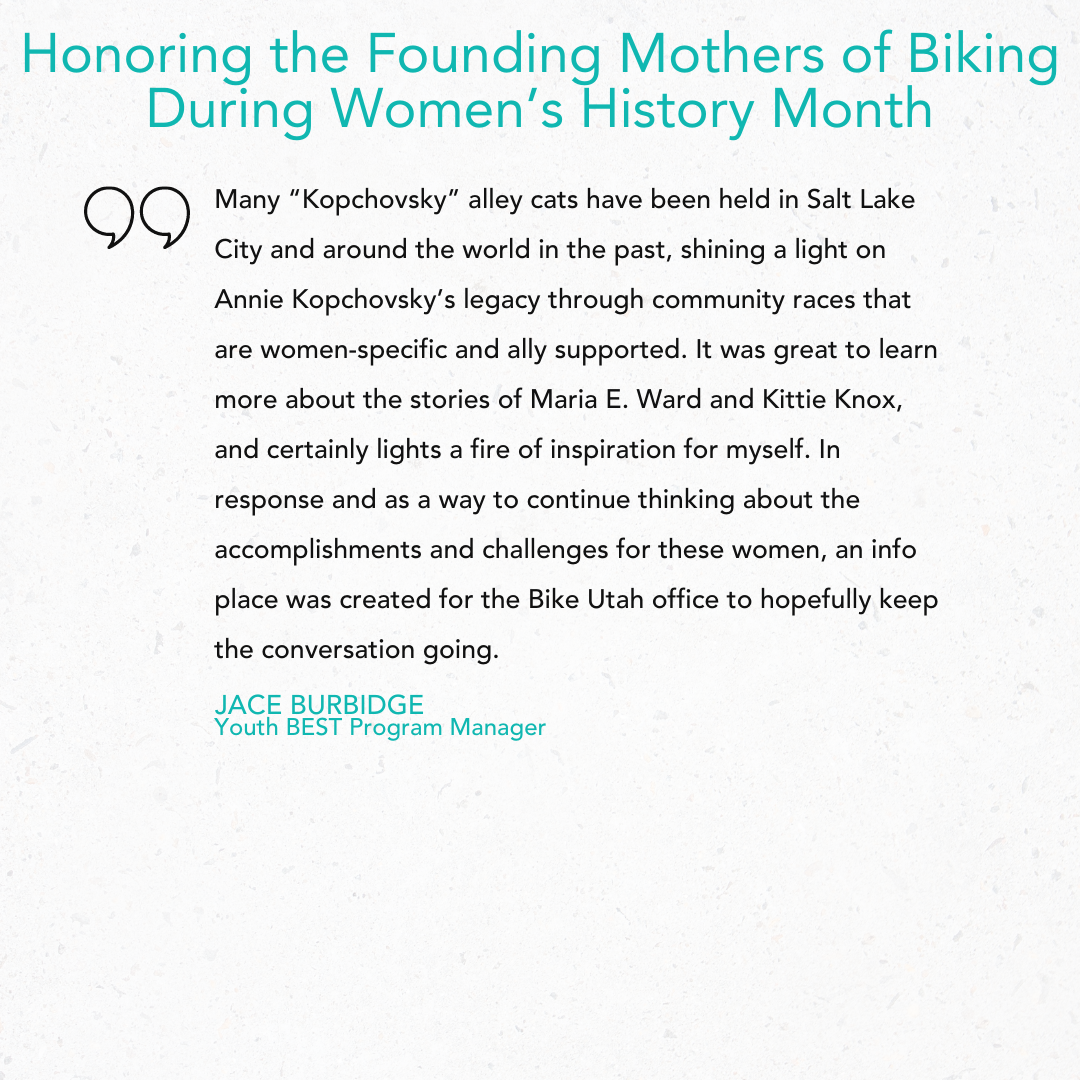
Join us for our next reading, Bike Lanes Are White Lanes by Melody L. Hoffmann. Stay tuned for a written discussion to be held during Bike Month 2021.
Bike Utah Summer Internship Program
Through our internship program, we are looking for talented people passionate about creating a bicycle friendly Utah. This will be a fantastic opportunity to work in your community and learn what it’s like to work at a nonprofit that has strong public/private partnerships as well as execute multiple initiatives and events.
“I absolutely loved interning with Bike Utah! While I interned there, I was able to gain hands-on experience in several areas of the nonprofit world. I felt like I was given meaningful tasks that have translated into useful skills I can use in various jobs.” — Sariah Graham, Bike Utah Intern 2020
This summer we will have two internship positions open: Development Internship and Communications Internship. We are looking for people who are interested in honing their development or communication skills and have an interest in cycling. We provide all interns with relevant experiences and provide opportunities to cater projects to an interns specific interests.
We would love to have you on our team! Learn more about the opportunities below!
Communications Intern
The communications intern will work to grow and expand the network of Bike Utah. The position will offer a great opportunity to gain experience in event planning, social media, campaign planning and execution, and marketing.
Development Intern
The development intern will work to grow and expand the work of Bike Utah. The position will offer a great opportunity to gain experience in grant research & writing, donor management, and event planning.
Advocate of the Month: Adan Carrillo
Utah is home to many community bicycling advocates, who dedicate time and energy to making riding in their cities and neighborhoods more safe and accessible. Bike Utah is excited to highlight an advocate each month, with the goals of recognizing their work, connecting with more community members, and inspiring new advocates to take action!
Occupation: Corporate Relations Manager with Rio Tinto (March2021- )
Associated Group: Bicycle Collective, formerly with the Salt Lake County Bicycle Advisory Committee (2017-2019)
Position: volunteer
What is/was your favorite bike?
My favorite bike is a Retrospect Harper (a single-speed bike) with coaster brakes, which I’ve modified and upgraded a bit. It is my favorite because it is super simple and easy to use and maintain.
How do you integrate biking into your everyday life?
Before the pandemic, I would try to ride to work as much as I could. Due to my proximity to the office, I’d take the long way simply to extend my commute a little more. These days, I still bike around town when going out to restaurants or running errands, mostly around the downtown and Sugar House areas.
Where is your favorite place to ride in Utah?
Riding with my daughter and niece along the Porter Rockwell Trail is always the most fun. Here in SLC, I like biking around town and taking shortcuts through alleyways that otherwise I wouldn’t take while driving. I also like the many trails around Summit County and Moab.
How do you include bicycle advocacy in your work?
Most of my work involves highlighting the “what’s in it for people” aspect of what we do. Improving active transportation doesn’t resonate well with anyone until you remind them about the interconnectivity it has with our costs of living, our health outcomes, and the environment. Now more than ever, we must strive to provide a more equitable and sustainable quality of life for everyone; my work in advocacy is conducted with this goal in mind.
What projects are you excited to see be completed or begin in the near future?
Starting this spring, we’ll begin to transform several streets in Salt Lake City. 300 West from 2100 South to 900 South, 900 South from 900 West to 900 East, 900 East from Hollywood Avenue to 2700 South, and starting in 2022, 200 South from 400 West to 900 East to name a few. I’m privileged to have been working alongside some of the most talented, visionary, and passionate people in the active transportation industry in the state. I believe people will be amazed to see the final product once these streets are reconstructed. As far as I know, no other municipality in the state is prioritizing active transportation as much as we are… it’s been a unique opportunity for me.
“Bike Polo is a super fun activity but it’s also very challenging. I am not very good at it at all, but I really do enjoy it whenever I try it. I know there’s a desire to grow the sport, and those who do it regularly are friendly and welcoming to let anyone join them. You can learn more about it by following them on instagram: @beehivebikepolo”
How do you balance your career, advocacy efforts, and private life while avoiding burnout?
I am very aware of my limitations as a city staff member. Therefore, I have learned to rely on other groups and people to jump in and carry forward some of these other advocacy efforts. I truly see advocacy as a team effort; not one single group or individual will ever succeed on their own. I think of my role as one that creates opportunities for open conversations to take place and provides as much information as possible to allow interested parties to decide when and how to get involved.
What is a time when multiple groups came together and made a positive change together?
Last year, the City’s Transportation and Streets departments collaborated with surrounding communities, and members of the Sweet Streets and Cycling Utah organizations to decide what the new striping design for 500 East and 700 South would be after these pavements were resurfaced. Thanks to their input and our technical analysis, we improved accommodations for people riding bicycles along these two popular streets.
What do you find most difficult about doing your work?
Retrofitting streets that for decades have been exclusively planned for people driving is without a doubt the most challenging aspect of our work. Across the transportation industry, the budgets allocated towards the construction of active travel facilities and their maintenance have yet to be allocated more consciously. I feel at Salt Lake City, we’re starting to set the example in terms of what it takes to do this successfully and sustainably, but the City alone will only get so far. We need the rest of the state to begin doing the same if we want to experience a palpable difference.
What do you do to overcome those difficulties?
I’m a firm believer that we won’t overcome these challenges alone. I believe we must take the time to deliberately partner with other local entities, non-profit organizations, advocacy groups, and the business community, so they can help us request these needed changes. As city staff members, it is very difficult for us to lobby our own elected leaders, so we must rely on community members to be the voice of reason and ask for these types of active transportation investments themselves. I would encourage everyone reading this to become more involved in asking their government officials how they can be of assistance in advancing their own city’s active travel goals. If a particular municipality doesn’t yet have an active transportation plan, you better bring your friends with you, because that means there is a lot of work to do.
What do you find the most rewarding about your work?
The most rewarding aspect about this type of work is that day in and day out, we’re making efforts and investments, at times historic, to dignify people’s travel experience by improving other transportation modes, not just driving.
What advice do you have for someone who has an idea, but has no idea where to start?
Reach out to the many individuals who are already advocating for active transportation infrastructure to be built and learn from them, you might even help them amplify their voice along the way. Reach out to your own elected officials at all government levels and request that more resources are devoted towards active transportation. Often, by the time transportation officials are planning or designing the next road projects, the funding has most likely already been earmarked towards a particular transportation aspect, and it’s near impossible to shift it then. I would urge everyone to get involved early on and to hold us accountable throughout the process, in a civil and constructive way.
The Salt Lake County Bicycle Advisory Committee, the Salt Lake Valley Trail Society, WalkBike Provo, Sweet Streets and Vineyard Velos are organizations made up of passionate individuals from all walks of life who are making a positive difference in terms of bicycle advocacy. Bike Utah’s 1000 Miles Program is also a great avenue for people to learn more about this cause and be a part of it.
How can we engage future generations to continue advocacy work?
We must invest the time and effort it takes to develop genuine relationships of trust with the external groups I mentioned earlier and invite them to support us. The old “us versus them” mentality must be rejected if we truly want to foster meaningful, productive outcomes. As I always say: “Those bike lanes aren’t going to build themselves.” As transportation professionals, it is always more challenging to advance our agenda forward without meaningful collective feedback or help. We must invest the time and effort it takes to do this right, and it requires a joint, concentrated effort. It is up to us to properly illustrate the important consequences that our transportation choices today will play in our health, economic, and environmental outlooks tomorrow.
Do you have a follow-up question for Adan? Would you like more info about your local bicycling advocacy group or have a specific active transportation project you’d like to see initiated? Do you know an advocate we should highlight? Email info@bikeutah.org!
Take the Seven Greenways Vision Plan survey!
What is the Seven Greenways Vision Plan?
The Seven Greenways Vision Plan is an effort to create collective greenway corridors along the seven major waterways flowing out of the Wasatch Range in Salt Lake County, including City Creek, Red Butte Creek, Emigration Creek, Parleys Creek, Mill Creek, Big Cottonwood Creek, and Little Cottonwood Creek.
What is a greenway Corridor?
A greenway is a linear corridor located around a stream and adjacent land. They are used to enhance bicycle and pedestrian access, generate economic activity, increase resilience to flooding, treat stormwater through stream restoration and daylighting, and provide valuable habitat for wildlife.
Take the Survey!
The Salt Lake Valley is facing an exciting future—a connected system of greenways that celebrate our waterways. We believe this resonates with virtually every person who lives, bikes, works or visits our beautiful Valley.
To create a better future for the Seven Greenways Vision Plan take this survey. This survey will close on March 17th, your input will shape the creation of greenway corridors, along our seven major creeks in the Salt Lake Valley, that celebrate water and connection in our oasis on the desert’s edge. The survey is offered in both Spanish and English!
EXTENDED: Early Registration Price for the Utah Bike Summit
EXTENDED Early Registration Price for the Utah Bike Summit
We’re EXTENDING Early Registration Prices until Wednesday, March 17th.
Join in the discussions March 30th – April 1st online for three days of speakers, training sessions, networking opportunities, and discussions focused on making Utah a better place to ride. Click here to view more information or to register.
You’ll gain actionable ways to improve Utah’s infrastructure and your community in hosted discussions about:
Population and Popularity Growth and Mountain Bike Trail Capacity
Utilizing DATA to create more equitable infrastructure
Representation in the cycling space
How to keep new riders pedaling into the future
Career Planning for future cycle industry and transportation professionals (Free Youth Session)
And many more!
Early Registration Price of $60 ends Wednesday, March 17th at 11:59pm
In this program, we’ll be sharing the most powerful and most useful tools we know from working directly with people and communities across Utah. The summit will include state and local decision makers, the cycling industry, and leaders in fostering Diversity, Equity, and Inclusion in active transportation to build a better community through cycling.
We look forward to seeing you at the Utah Bike Summit!





![5[29364].jpg](https://images.squarespace-cdn.com/content/v1/5b8b54d1f407b40494055e8f/1621629927412-S1MQ8LIDOMWGSDGRS4J1/5%5B29364%5D.jpg)
![6[29365].jpg](https://images.squarespace-cdn.com/content/v1/5b8b54d1f407b40494055e8f/1621630217844-CROSRHQ6CVUEX7NPNW6O/6%5B29365%5D.jpg)
![6[29365].jpg](https://images.squarespace-cdn.com/content/v1/5b8b54d1f407b40494055e8f/1621630332340-A4TUEJDZCVF79W982SSB/6%5B29365%5D.jpg)



























